Ethiopia is ancient Abyssinia. It’s ‘once upon a time’ fables, rock hewn churches, soulful smiles and every traveller’s wildest fantasy. It’s the place where legends began, a fantastical fable about golden deserts and Sheba and Solomon. This itinerary and guide for visiting Ethiopia will highlight how it's like nowhere else on the planet.
Neither European nor truly African, it will leave you dumbfounded, scratching your head trying to understand the nuances that make it a wedge between continents.
It’s the stuff real travel dreams are made of. However, a degree of challenge is involved in backpacking Ethiopia.
It may not be the famine ravaged country historically perpetuated by the media, but pecuniarily it is poor. I was tested to my limits, left feeling distraught, and titillated to the max.
Ethiopia is exotic, but not for those seeking sun-kissed beachside relaxation: you come here to be stirred emotionally. And stirred you will leave. With a Visa and MasterCard that couldn’t be made to work followed by a bout of typhoid, I certainly was.
Here's what you'll find in the guide-cum-itinerary.
Solo Travel Note on Safely Visiting Ethiopia
In all sincerity, Ethiopia wasn't the easiest country to explore alone. There were moments that were very confronting, an emotional rollercoaster that really challenged me.
Linguistically, without Amharic (especially outside of Addis Ababa), there were times in which I didn't know how I'd get to the next destination. Few agrarians speak anything other than Amharic and dialect. Logistically, with a suitable guidebook, getting to the common and more frequently visited areas (outlined in this itinerary) wasn't overly problematic.
If, like me, you're a solo traveller who likes spending a day here and there with other travellers, then you may be disappointed: there are not many opportunities for meeting other vagabonds. Hostels don't exist (outside of the capital) and, if you're travelling out of season, you may not see other travellers while on the open road.

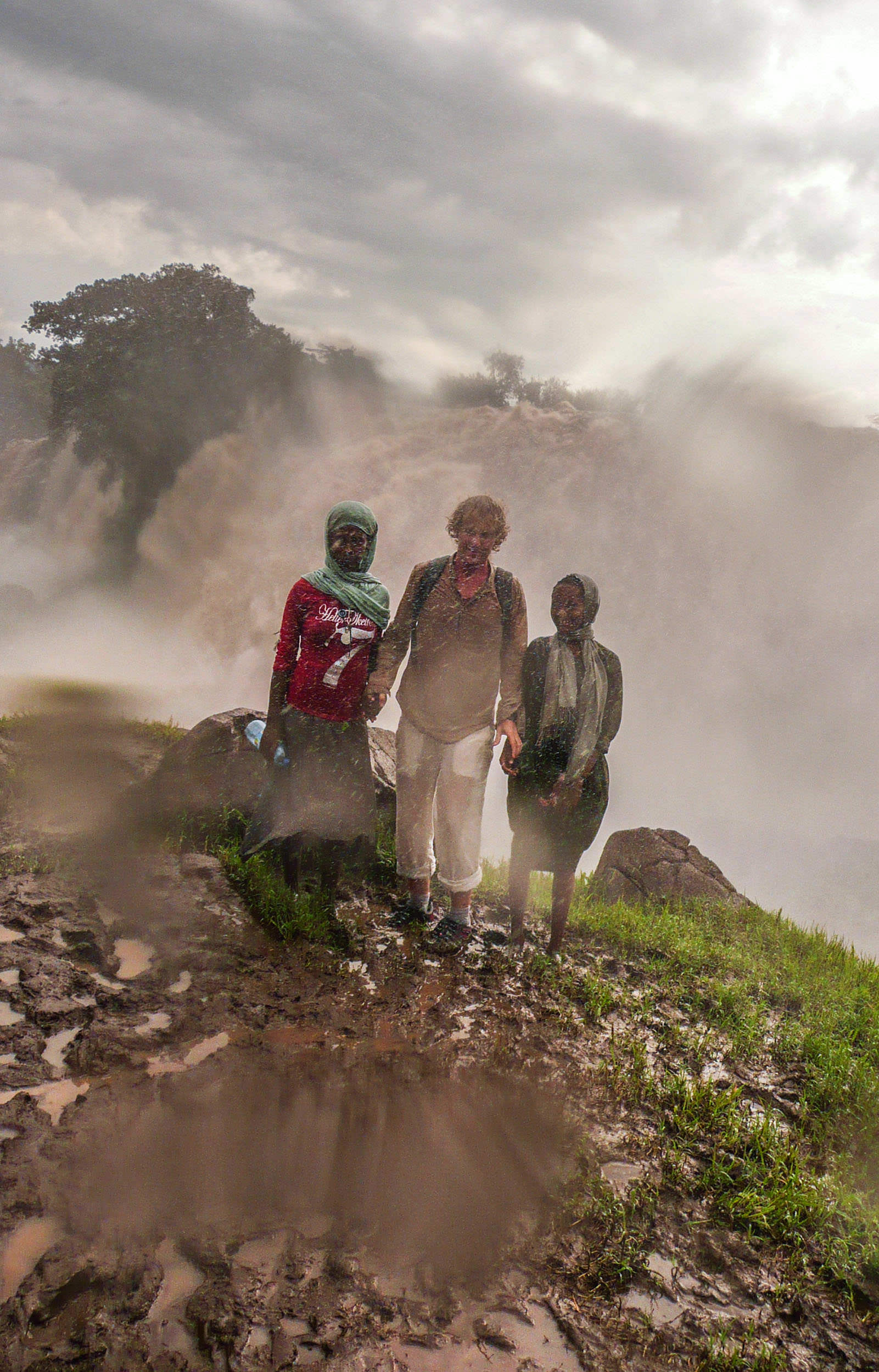
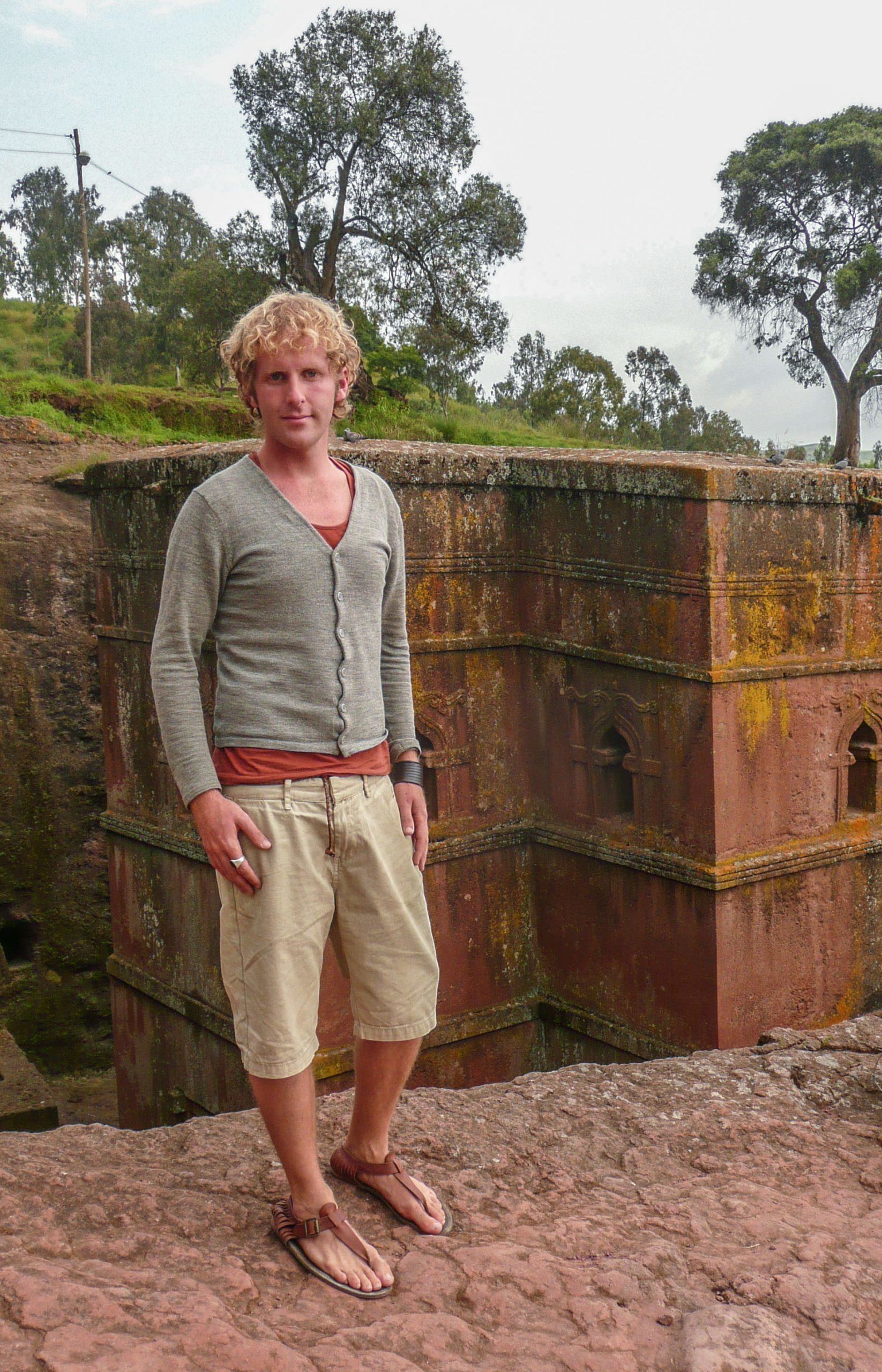
Ethiopia is, though, a great place for giving you strength and testing yourself, mentally, emotionally and physically. I believe travelling Ethiopia alone - and surviving - made me a more competent, courageous and confident traveller ... with a stronger sense of wanderlust.
Here is the itinerary I created and followed while backpacking alone through Ethiopia.
Save this pin for future reference!
ADDIS ABABA
It’s a difficult city to describe. With a lusty energy pulsing rhythmically through its pothole littered dirt streets, it’s impossible not to feel beguiled.
Rustic on the outside and rambunctious in spirit, Addis Ababa is a paradox: full of baffling contrasts, visiting Ethiopia's capital city means gaining an understanding of the country at large.
Before moving north or south of the intoxicating capital, visit a few of the following sites that rest on the cusp of a mystical world.
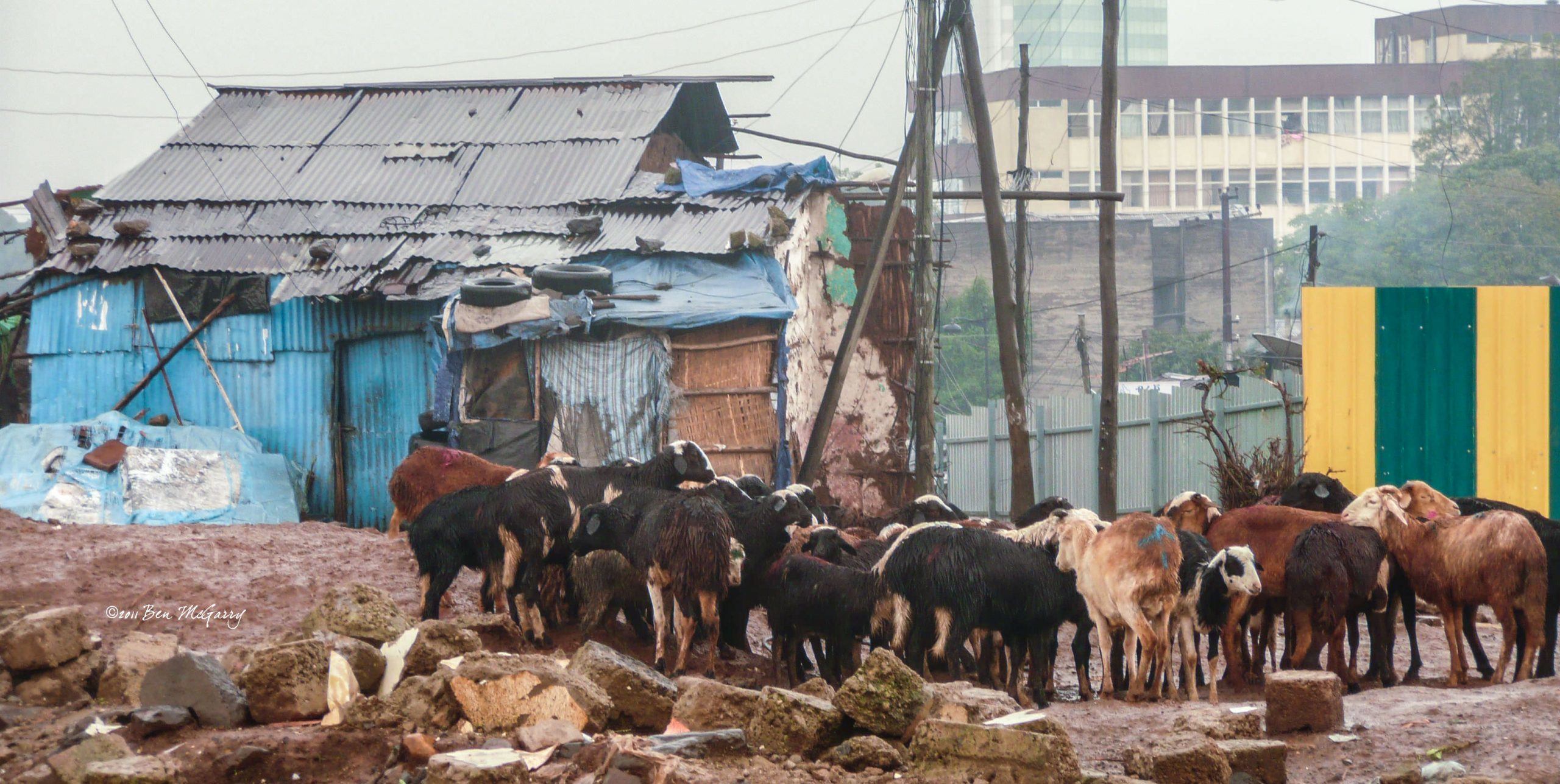
Merkato Market
More closely resembling a slum than a quintessentially African market littered with trinkets on rugs, it occupies a swathe of city, and is often – justifiably - missed by visitors. I was encouraged to go by an Ethiopian friend and was escorted by a contact of hers, a local.
I was thankful for the guide because, although a gratifying place to visit, the smells, shady characters and general dishevelled nature left me a little discombobulated.
Despite its warts, the market is home to the exotic spices, jewellery and other paraphernalia evocative of Ethiopia. A visit, therefore, is justifiable, but do keep an eye on your money while exploring the tin shacks.
National Museum of Ethiopia
With a historical legacy stretching almost to the dawn of mankind, taking time to visit the National Museum is stepping foot inside a lost world. By entering, the opportunity to understand the deep roots of Christianity and its links to the country’s development is provided. In fact, acquiring a working knowledge of said ecclesiastical origins is fundamental, particularly if exploring the northern frontiers of Axum and Lalibela.
It gave me clarity regarding the country’s origins and the religious fanaticism that underpinned certain attitudes I encountered.
The museum is located on King George VI Street in Addis Ababa.
Yod Abyssinia or Habesha Restaurant
At night, certain neighbourhoods evolve into a sybaritic lair, bodies guided by booming beats and neon flashing lights. It’s a world away from the eskista shoulder dancing that erupts on the stages of Yod Abyssinia and Habesha Restaurant.
Shoulders synchronously rolled, twisted, bounced then flexed, performed evocatively to a cadenced drum beat accompanied by the virtuosity of a beatific Ethiopian voice and mesenko. It was eye-popping, and hypnotic.
Although a tourist trap, a type of attraction I would often avoid, I’m pleased I took the opportunity to attend. It was trancelike, and a real taste of the exoticism one expects of Ethiopia.
Meskal Square (at Festival Time)
Perhaps it shouldn’t be on the Addis ‘must see’ list, a drab open plaza from the Communist years. But it does come to life during the Meskel ceremony: celebrated annually in September by Ethiopian Orthodox, the plaza erupts into a flurry of religious festivity.
Otherwise, a simple drive by in a ubiquitous Toyota HiAce ‘blue donkey’ (shared minibus) will be enough.
Local Encounters
Travelling alone provides an idyllic opportunity to engage more closely with locals, although at times it can be fraught with peril. Whether dining in a restaurant, walking along Bole, shopping at Merkato or travelling across town in a shared minibus, there are endless opportunities to engage and gain an understanding of that which makes Ethiopia so unique: its people.
I traversed the city regularly in shared minibuses, and despite a dearth in Amharic proficiency, was able to forge friendships with some of the kindred souls who guided me and provided support whenever the ‘help, I’m lost’ look plastered itself across my face.
Staying in Addis Ababa - RECOMMENDED LENGTH OF STAY
Staying in Addis Ababa - ACCOMMODATION
Eating in Addis Ababa - RESTAURANTS
Getting Around Addis Ababa - TRANSPORTATION
Getting to Addis Ababa - TRANSPORTATION
BAHIR DAR
A bustling, dirty and poor metropolis on the outside, inching closer to Lake Tana transforms the cityscape: wide streets lined with palm trees open to a panorama of the lake’s murky waters. It’s perhaps Ethiopia’s most scenic city, but it wasn’t the city I’d come to see: with island monasteries littering the lake, launching a boat excursion was at the top of my Bahir Dar wish list.
A ten-hour bus ride north of Addis Ababa, it’s worth enduring the nauseating journey - littered with windy mountain roads and strangers’ children vomiting on one’s lap - for a chance to visit the monasteries and the Blue Nile Falls.
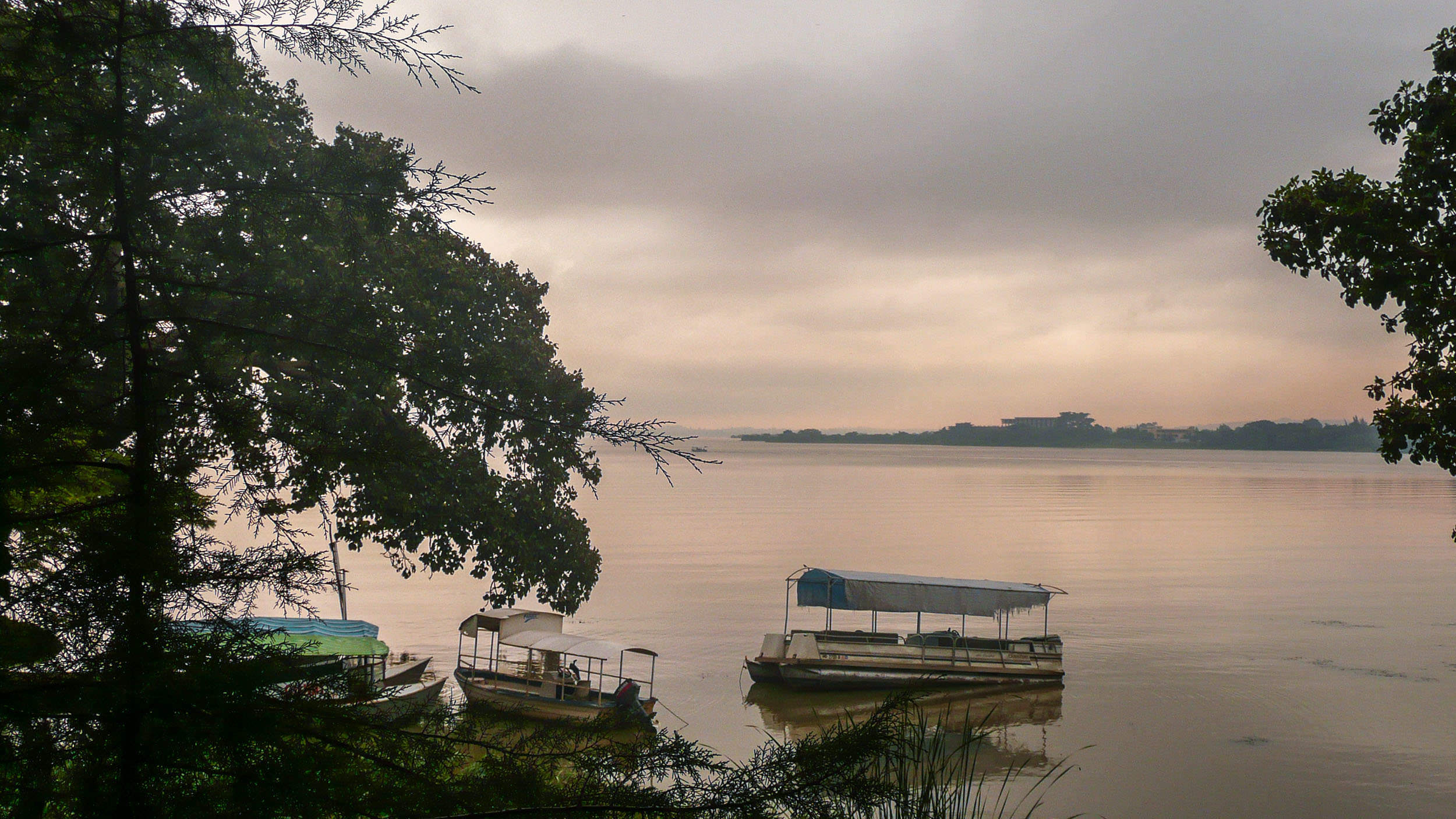
Lake Tana Monasteries
Peppered throughout the lake and around its periphery are 20 (or more) establishments in which monastic life has unfolded since the 14th century. Steeped in mystery and brushed with a stroke of intrigue, the ancient churches are sanctuaries, havens of peace and tranquillity for monastic residents.
Unknown to the outside world until the 1930s, they’ve since risen in fame and are now a popular traveller destination, a stopover en route to the Aksumite churches of Tigray and rock hewn beauties of Lalibela.
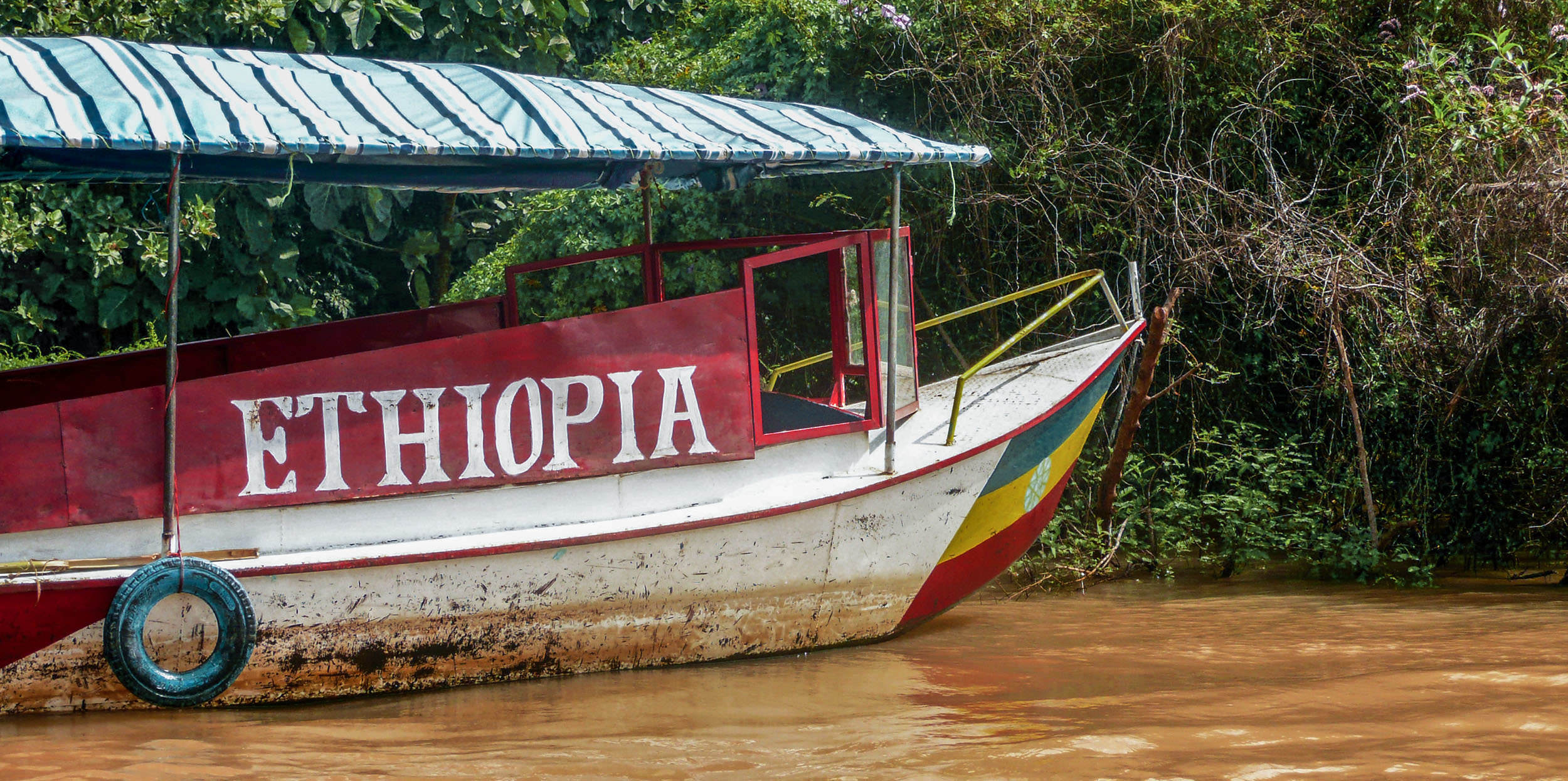

I arranged a boat tour on arrival in Bahir Dar, with a local scout I met outside Ghion Hotel. Requisite to the discussion was a price negotiation, a necessity when embarking on Lake Tana excursions.
Ensure you know what price is normal for half and full day excursions, before bargaining commences. Also ensure you discern how many monasteries will be visited, which ones, what type of boat will be used and whether or not it has life jackets.
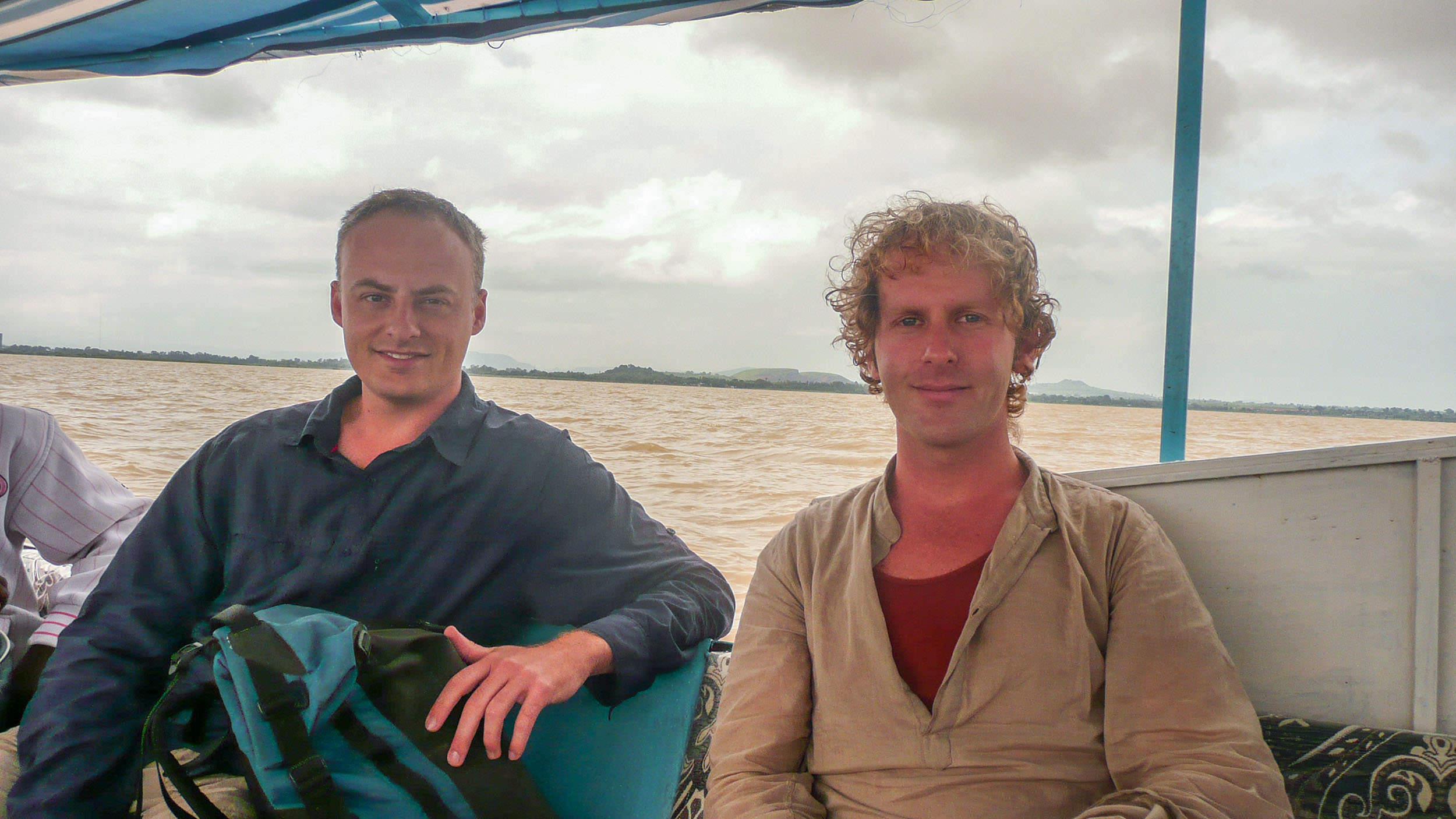
The tour I took included four island monasteries and one on a peninsula. The following two were the most noteworthy.
Kebran Gabriel Monastery
Shrouded in thick forest, it was the roof that I saw first from the lake as the boat glided across Tana’s surface. Men on papyrus canoes paddled past, their load filled with firewood, as we docked at the island.
After a short walk, the men on board our boat reached the monastery sitting on top of the hilly island, an establishment dating to the 17th century. Women are not permitted, their presence thought to be too great a temptation for the celibate monks.
Following a short walk around the circular structure, I entered, and was taken aback by the contrast: colourful frescoes covered the walls, artistic representations of the death of Jesus. Monks walked by, engrossed in the ritual of daily monastic life, and I watched voyeuristically, a curious traveller with a penchant for learning about the world, both new and old.

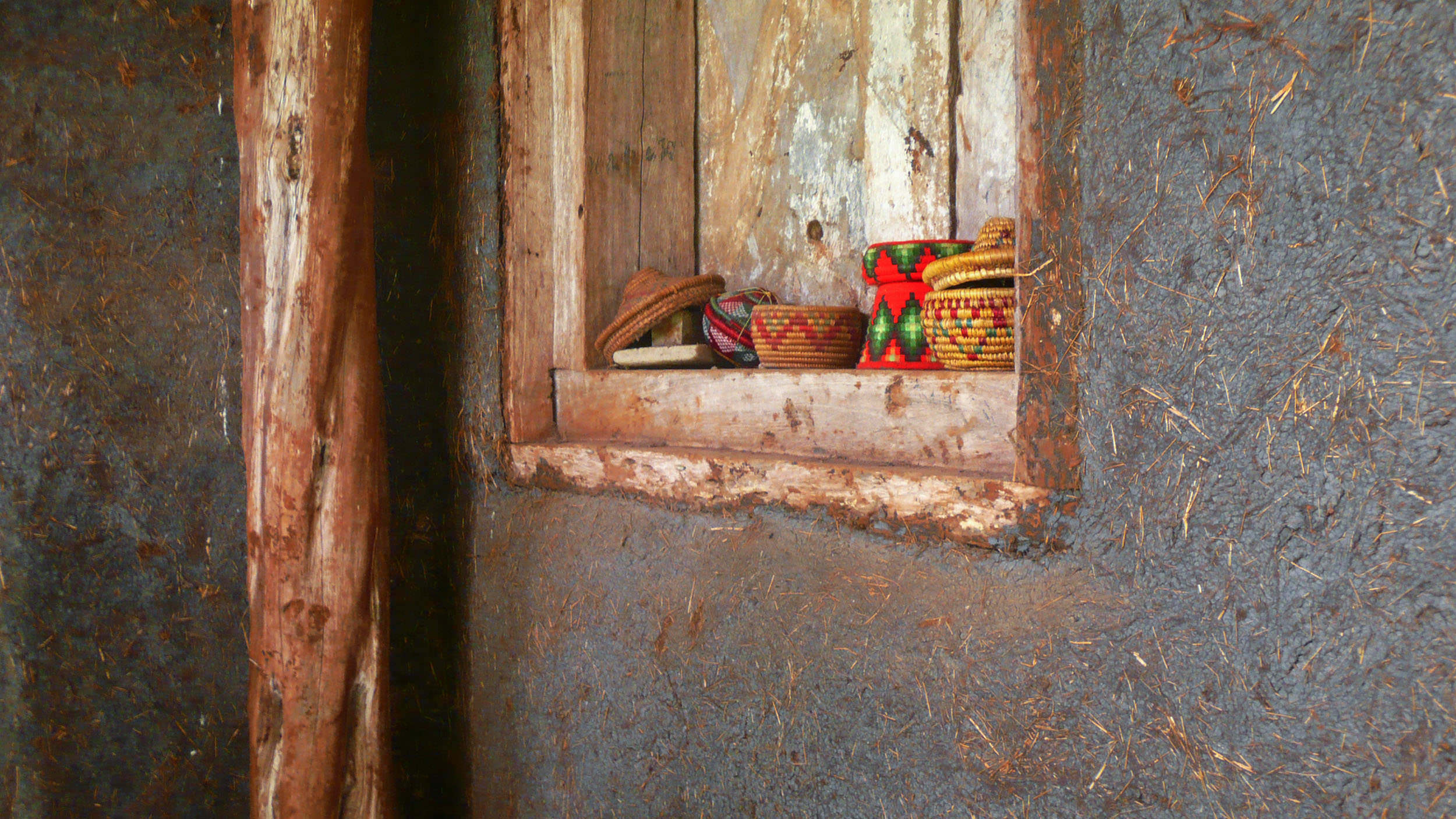
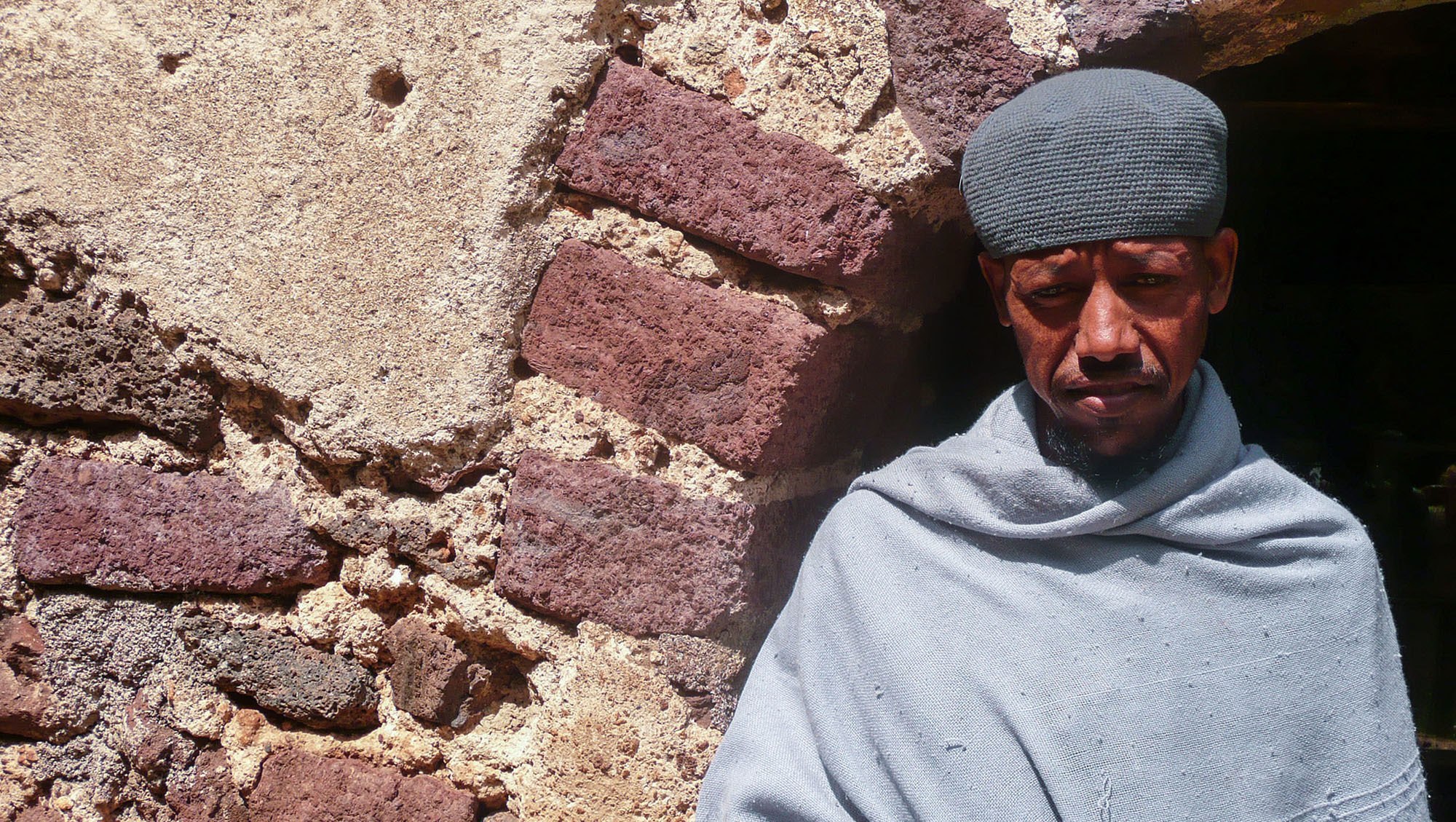
Apparently, since visiting Ethiopia and the monastery in 2011, it has closed its ecclesiastical doors to the public. There was a fee to visit, the price a little lower than that charged by the other monasteries I saw.
Debre Maryam Monastery
One of the newest of the monasteries, built in the 19th century, its style is typical of rural Amharic buildings: simple and ungratifying. The friendliness of the priest contrasted the humble surroundings. He welcomed us and offered to play the role of guide as men and women alike approached the entrance. It was the friendliest of the five monasteries I visited.
Following a meander through mango and fig trees, I followed the priest who proudly showed manuscripts dating to ‘ancient’ times. With naïve art covering the walls of the rudimentary, drab structure, there may be no beautiful aesthetics to entertain curious eyes. But don’t be fooled by looks: Debre Maryam is infused with an affable atmosphere, a sense of warmth that made me feel comfortable during the visit.
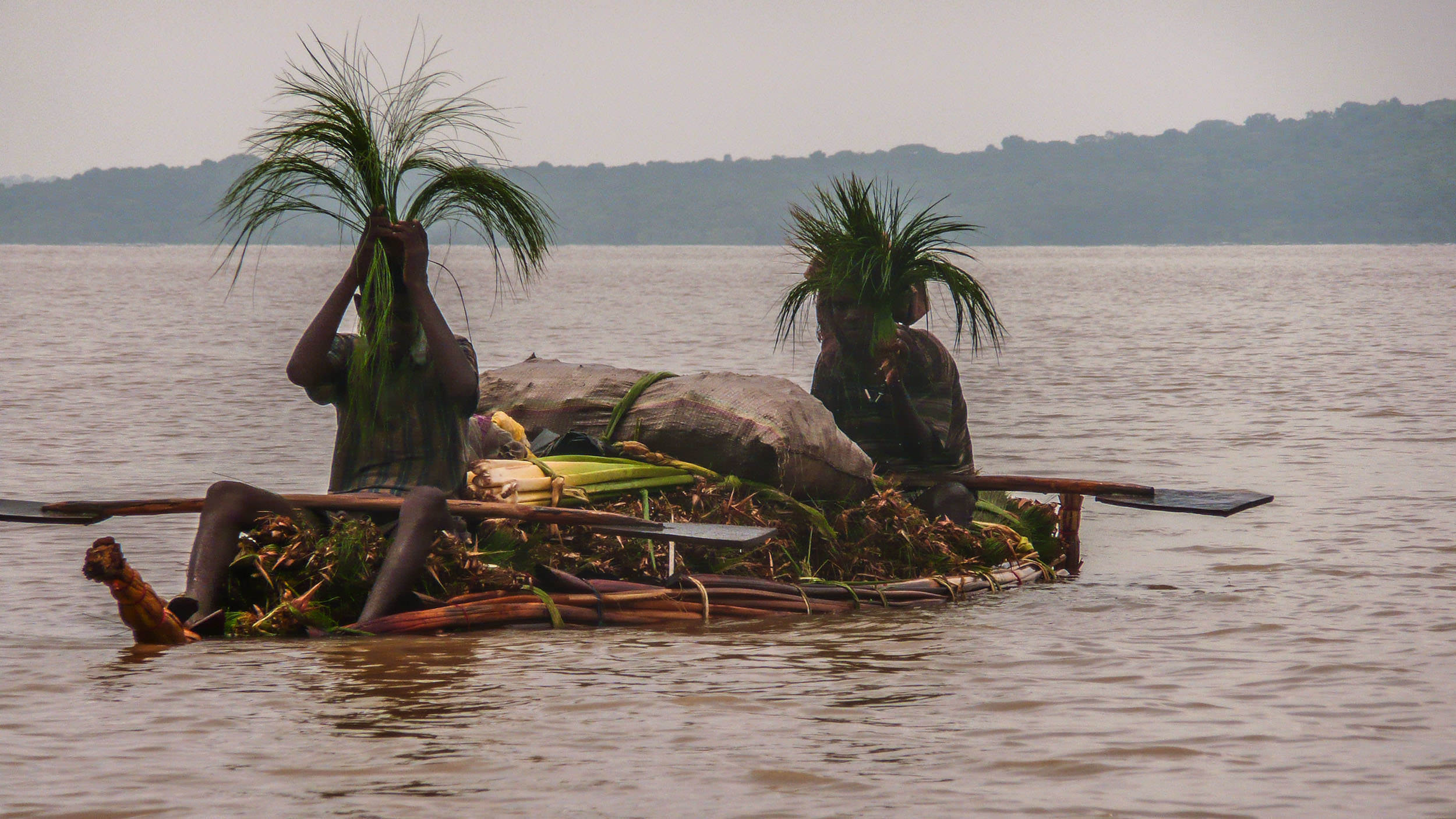
Like its siblings, there is a fee to pay at the entrance. Unlike Kebran (noted above), women here are permitted entry.
If you’re running short on time, this happens to be the closest island monastery to Bahir Dar and could be combined with one other island to form a short tour.
Blue Nile Falls (Tis Abay)
Near the starting point of the famous river that winds its ways to Khartoum (where it gets familial with its sister, the White Nile), the Blue Nile Falls see the enervated beast cascade over a 42-metre chasm.
The site was impressive, the sheer power throwing a heavy mist over the opposite bank where I stood, gradually saturating me to the core. It may not be Foz di Iguassu, but it's still worth a fraction of your time for the opportunity to witness the three-pronged waterfall create a powerful projection, and voyeuristically observe bucolic Ethiopian life in action.

It was my first taste of agrarian Ethiopian life, and although most people generally exhibited smiles, their surroundings painted a diverse picture, of hardship and economic paralysis. Thought provoking at best, it triggered a melancholy that loomed overhead throughout my journey.
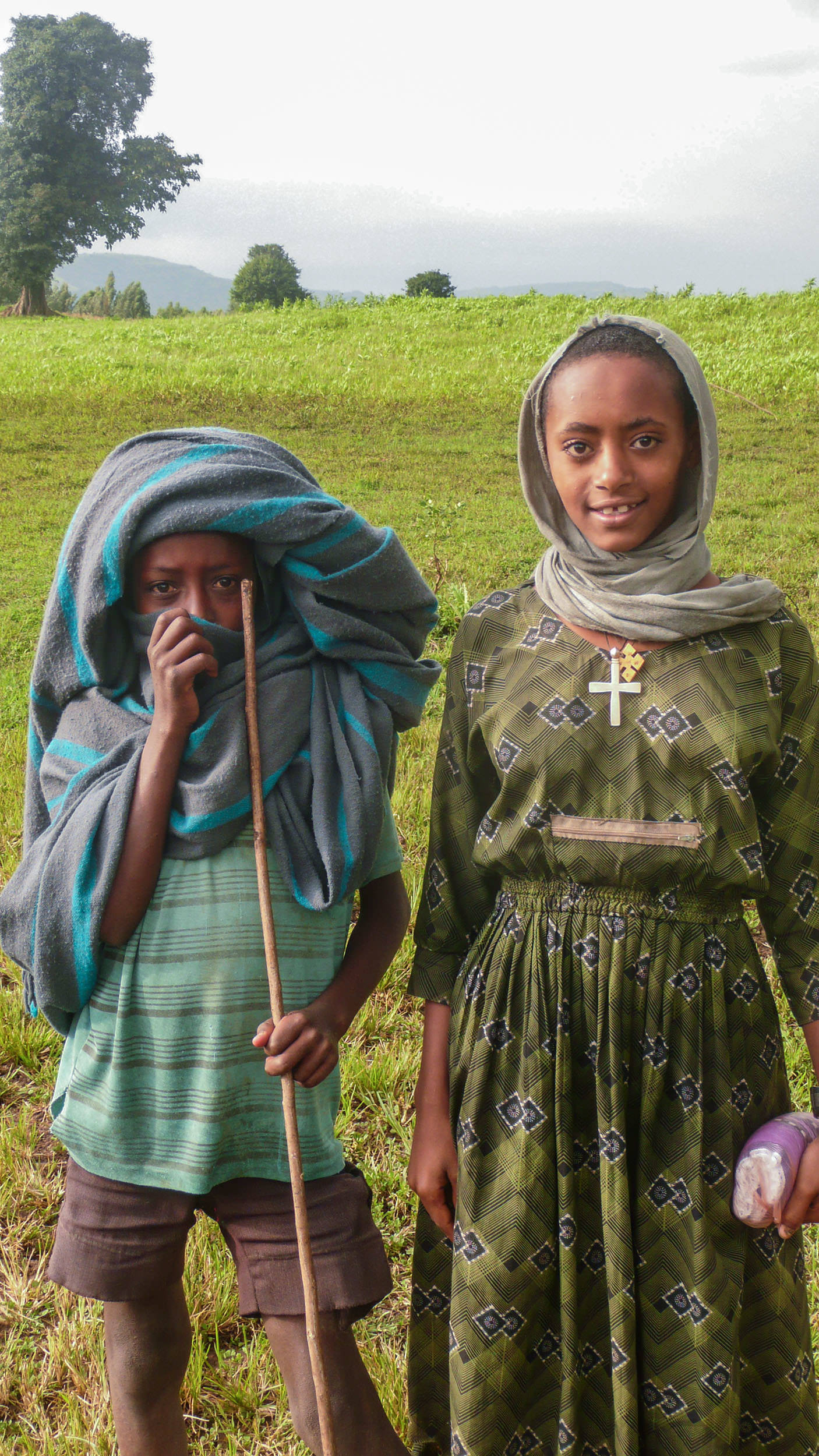



I was fortunate to snatch a cheap seat, at the final hour, in a shared minibus that had been hired by a group of American tourists (all of Ethiopian descent). I paid a nominal fee and was thankful for the opportunity to get to know new people and have two experiences in one day: a Lake Tana boat expedition and a Blue Nile Falls visit.
Otherwise, by public transport (a bus which arrives in the village of Tis Abay), I’d likely have had to do both excursions on separate days.
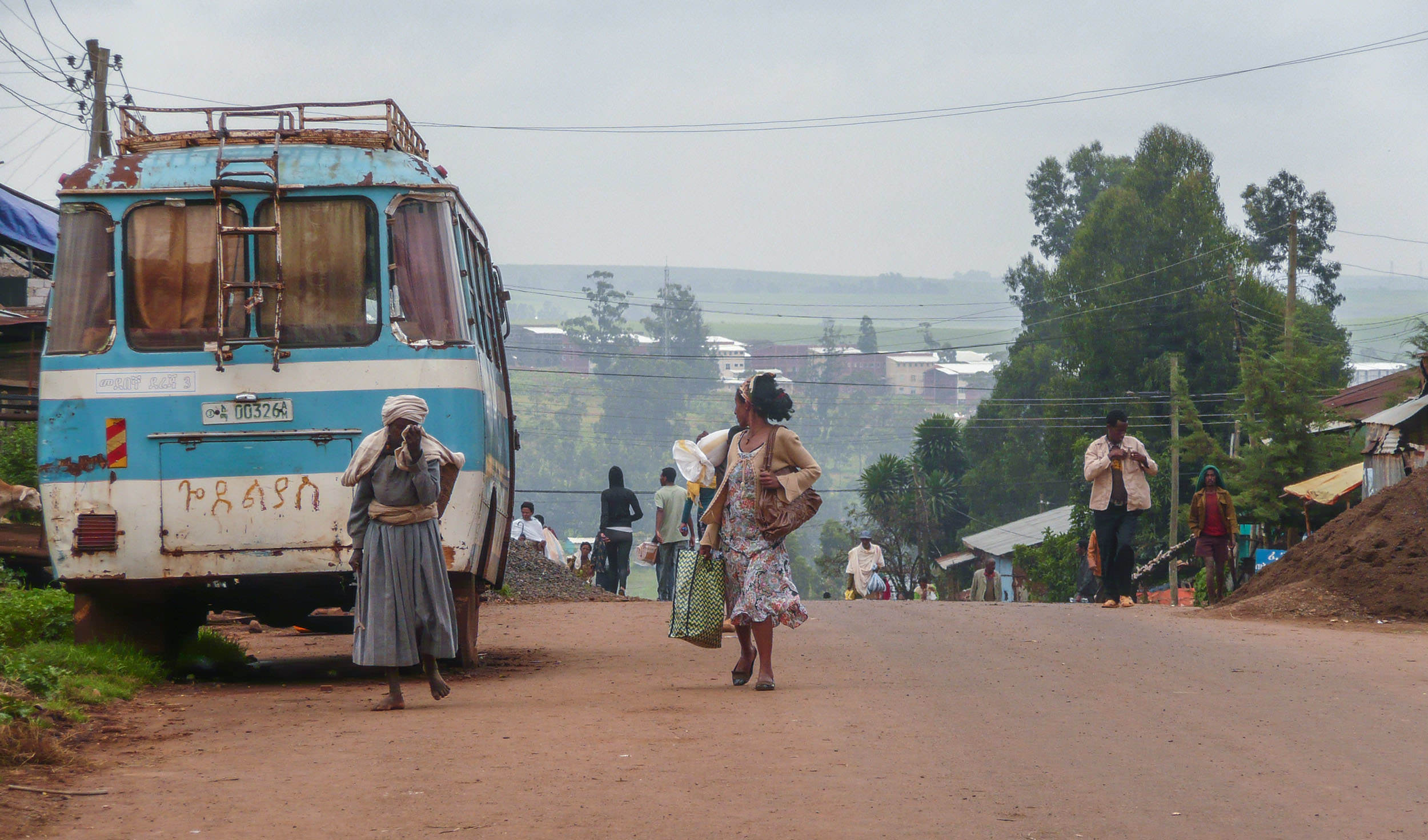
The falls create an explosion of water from August through September. During other parts of the year, it drops back to a drizzle.
Ask other travellers in Bahir Dar who have recently visited whether going is worthwhile, before taking the enduring road trip to the falls.
Staying in Bahir Dar - RECOMMENDED LENGTH OF STAY
Staying in Bahir Dar - ACCOMMODATION
Eating in Bahir Dar - RESTAURANTS
Getting Around Bahir Dar - TRANSPORTATION
Getting to Bahir Dar - TRANSPORTATION
GONDAR (GONDER)
It’s perhaps not the Ethiopia you have in mind: with a historical legacy of emperors and princesses, castles and fortresses, Gondar imparts more a feeling of the Arthurian world than Africa. Rich in antiquity and imperial historical legacy, you only need to walk through the banqueting halls of Fasil Ghebbi to slide into seventeenth century aristocratic shoes.
In and out of favour as the seat of rulership through the centuries, many of the historic buildings have not been maintained. However, most of the notable ones have survived, constituting Gondar one of Ethiopia’s most impressive antiquities.
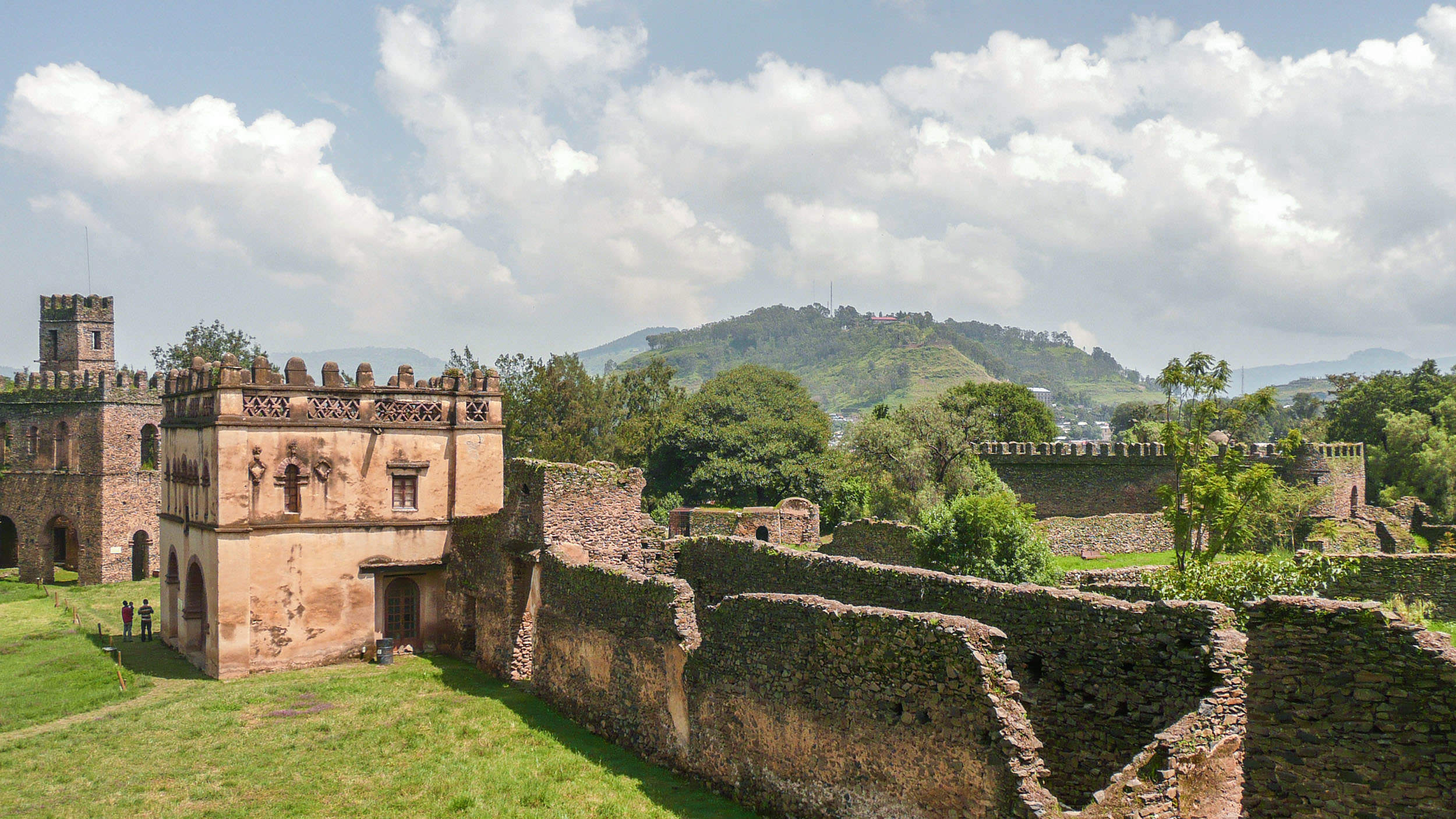
Thanks to a diagnosis of typhoid on my first day in Gondar, the duration of my stay was longer than anticipated, and my meanderings through castle and palace grounds were performed at a languid pace.
Despite ill health, once through the worst of it, I mostly enjoyed the visit, and recommend including it on a North Ethiopia itinerary (especially for history buffs).
But visiting Gondar (despite being the place my ill health commenced) wasn’t always a bed of roses. I’m still confounded by the occasional lobule of saliva that landed on my feet, clearly directed at me by male passers-by. The looks of contempt I would receive, again from men, still makes me uncomfortable.
Ethiopians are proud people. With a legacy of independence, surrounded by neighbours all of whom have been victimised by colonisation, they have maintained their non-colonised status despite the abject poverty that ravaged the country in the 80s.
Seemingly, the pride can occasionally transpire as detest for foreigners. But most of the people I met were kind and helpful.


It should be noted that Gondar is a starting point for camping and trekking trips through the beautiful Simien Mountains National Park, a trip I was sadly unable to take in the end.
Research it separately for up to date information and trekking advice. It can feasibly be included as part of this three-week itinerary, particularly if you spend three days in the park.
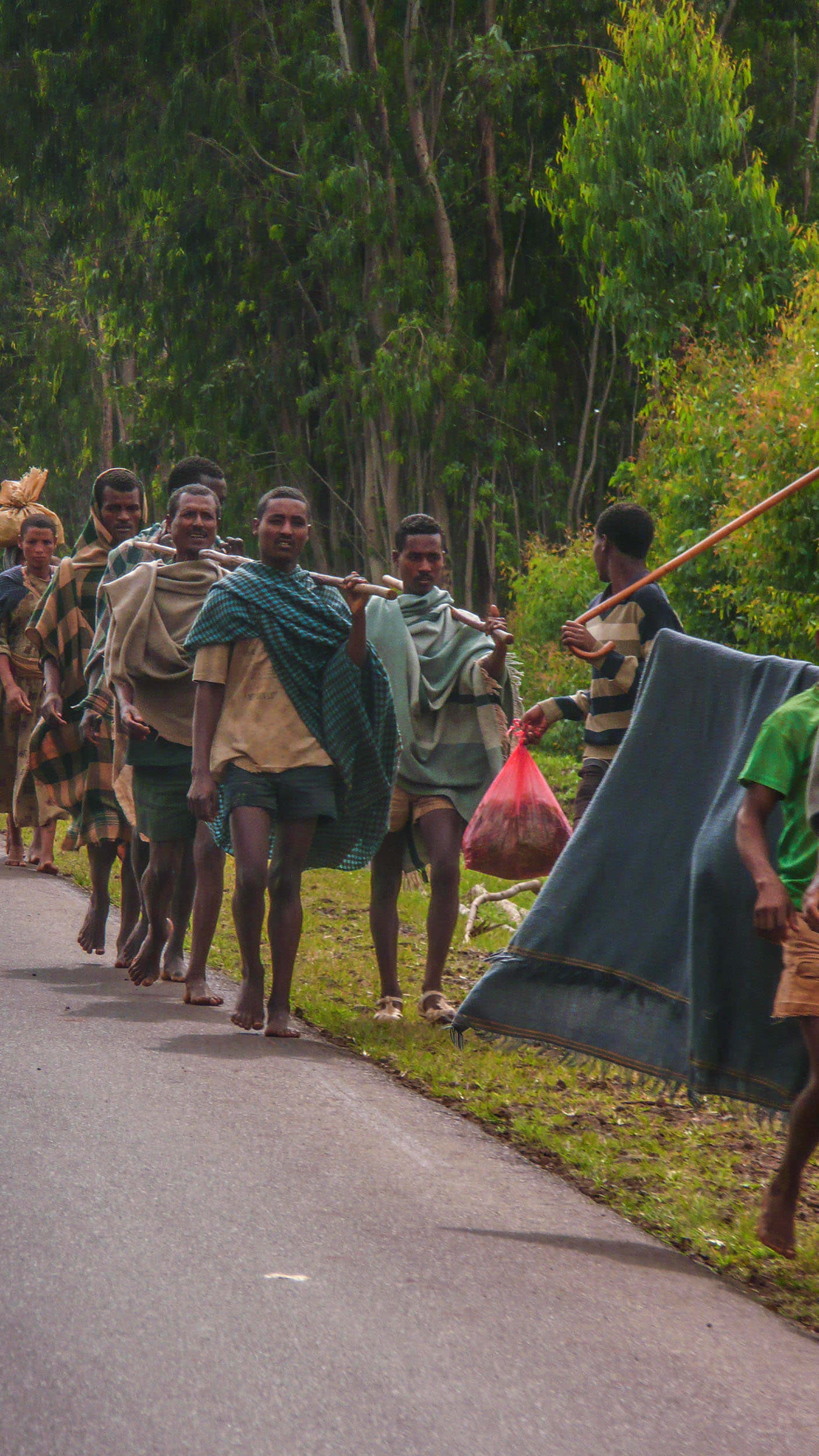

Royal Enclosure (Fasil Ghebbi)
A World Heritage Site, there are 70,000 square metres of castles, palaces and general antiquity to explore. Construction commenced in 1632 when King Fasilidas decided Gondar would become the Empire’s new seat of authority. It succeeded as such for 250 years and survived WW2 attacks in parts.
A day (or two) can be spent wandering through the grounds, stepping back in time to a regal part of Ethiopia’s history.
Using a local guide is advisable (for the reasonable price of Birr200-300), in order to gain the most out of the experience. Otherwise, meanderings can be performed solo (which is what I did), but expect to possibly get a little lost.
The following two features are the sites within the complex I saw (with limited energy reserves). There are far more features to the complex than those listed below, so please ask locally for further information when you arrive.
Fasiladas’ Palace
A short walk inside the entrance, it stands out at 32 metres, a building with mixed Indian, Aksumite and Portuguese influences. It’s an unusual fusion to behold.
Used for various purposes – dining, prayers, religious ceremonies, banqueting, bathing and living, a walk through the edifice showcases each respective area, along with frescoes and reliefs linking to the Solomonic dynasty.
Fasiladas’ Bath
Historically, it was used by royals as a place to swim, and for religious celebrations, the latter continuing to the present. Tranquil, the pool of water - surrounded by overhanging trees and overlooked by a charming building, is ideal on a hot summer's day for escaping the harsh heat. It’s a serene place and attests to the wellbeing ideals of Fasiladas and Iyasu I who likely initiated its construction.
It is two kilometres from the main piazza and a ticket must be procured at the Royal Enclosure entrance before making haste for the Bath.
Yenege Tesfa
Not part of the Royal Enclosure but still a valuable Gondar-based place to visit, Yenege Tesfa is a non-government organisation that provides homes for homeless and parentless children. The staff, comprised entirely of local faces, seek to transform the bleak outlook of children who have been disadvantaged and marginalised by large scale loss.
You can spend time visiting project sites or buying meal tickets and distributing them to children who still remain on the street. It’s a valuable enterprise, one I thoroughly enjoyed visiting, despite the sense of melancholy imbued by the miserable outlook of many of Gondar’s children.
Staying in Gondar - RECOMMENDED LENGTH OF STAY
Staying in Gondar - ACCOMMODATION
Eating in Gondar - RESTAURANTS
Getting Around Gondar - TRANSPORTATION
Getting to Gondar - TRANSPORTATION
AKSUM (AXUM)
Once the most powerful Kingdom between Persia and Rome, Aksum is home to some of the country’s greatest mysteries and most interesting archaeological ruins: monolithic obelisks; royal tombs; and ancient castles. A seat of power during the early Christian era from the first to the 10th century AD, its borders spanned a large portion of East Africa, including Eritrea, Djibouti and Sudan.
Claiming rights as the Queen of Sheba’s home, the resting place of the Arc of the Covenant and the burial place of a Wise Man (yes, one of the three), a walk through its tombs and palaces will set your imagination ablaze.
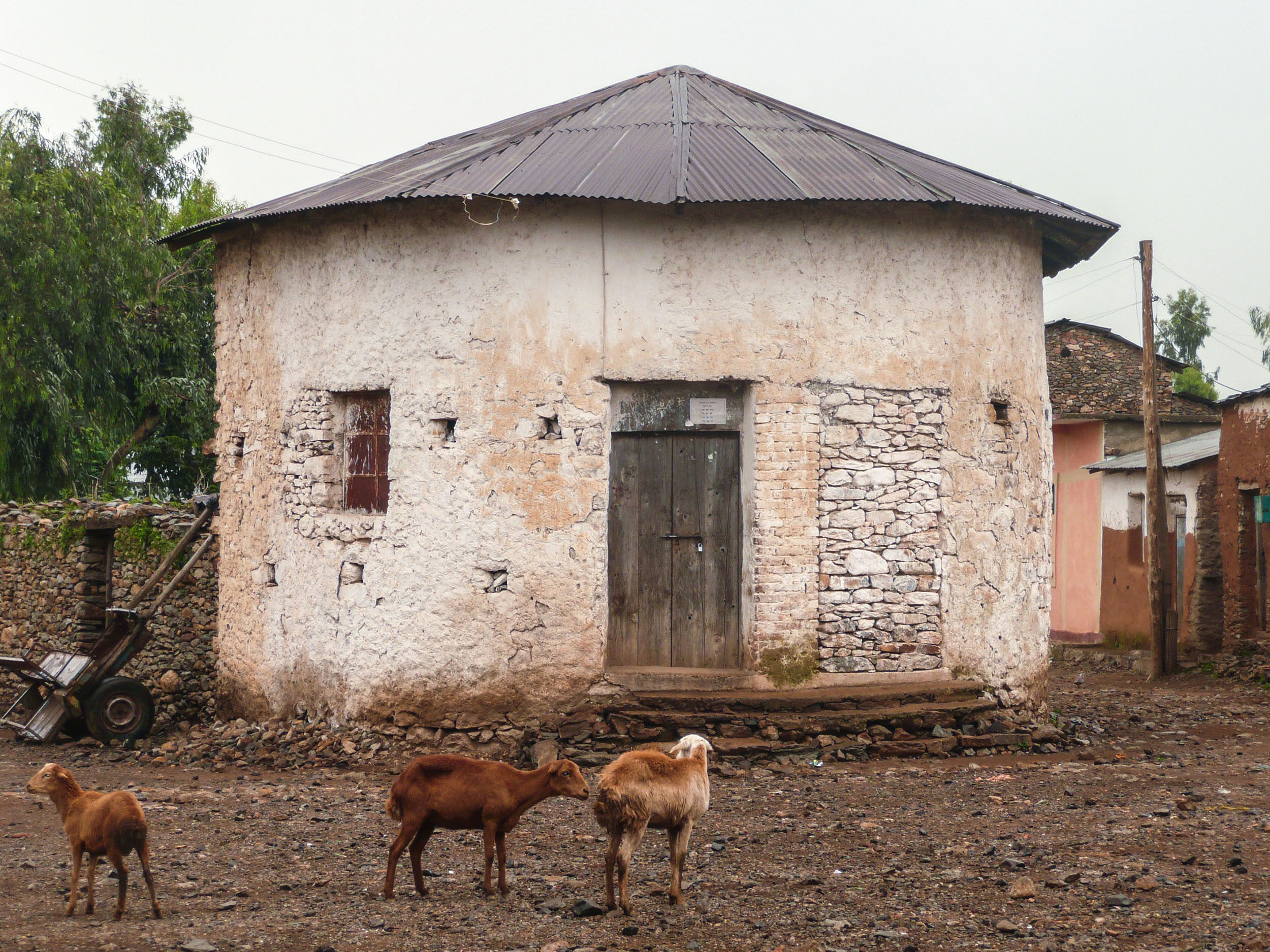
Despite beliefs contrary to several of the abounding ‘mysteries’, I employed the knowledge and local wisdom of a guide, who benevolently escorted me from site to site, explaining details as we dodged the likes of free roaming goats and cows. His enthusiasm and passion about Aksum and its supposed possession of the biblical Arc epitomised the general joie di vivre of the bucolic hub, often filled with pilgrims from all walks of life, abounding with the same level of conviction.
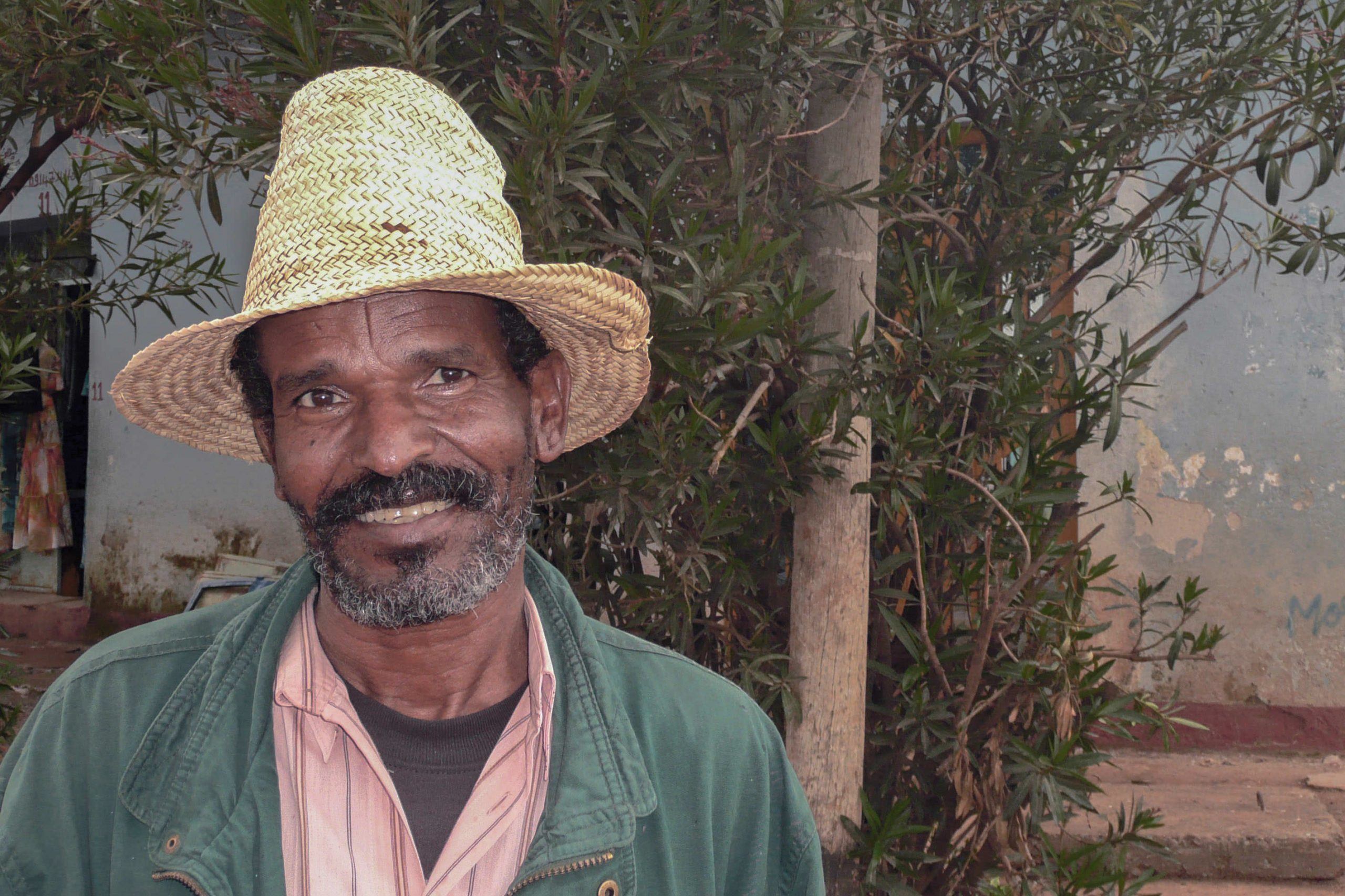
Even if you’re not Christian and have no ecclesiastical inclinations, a wander from site to site offers more than mere religious history: it’s an opportunity to get up close and personal with agrarian Ethiopians, a real glimpse into bucolic life in the northern-most reaches of the country.
Taking a voyeuristic glimpse of rural life in the farthest reaches of the country’s periphery is humbling, and emotionally confronting.
Obelisks
Peppering the landscape are many stelae, some as tall as 30 metres. Erected in the fourth century to mark the presence of regal – and less noble - tombs that lie underneath, a visit involves more than merely appreciating the architecture. Complete with elaborate decorations and secret windows and doors, the stelae (the proper term for obelisk) transport a little of the magic of the Aksumite Kingdom from the past to the present.
Whether I looked to the heavens above or the ground below, it was dizzying to consider other mysteries about the ancient civilisation yet to be uncovered.
Sadly, many of the tombs (once excavated) were pillaged, which left me with questions about the burial customs of the people.
Regardless, a wander through a stelae field is otherworldly.
St Mary of Zion Church
It is the purported home of the biblical Arc of the Covenant, its final resting place, at least according to Ethiopian Orthodox. The building itself, akin to its surroundings, is not a noteworthy structure. It’s the mystery, the story, the intrigue and the hysterical fervour created by fanatics – and the guide detailing the story with glee and pride – that make it a notable attraction.
I was not convinced, despite the animated gesticulations and persuasive argument vocalised by him. However, I enjoyed the experience.
Don’t forget to take a head covering.
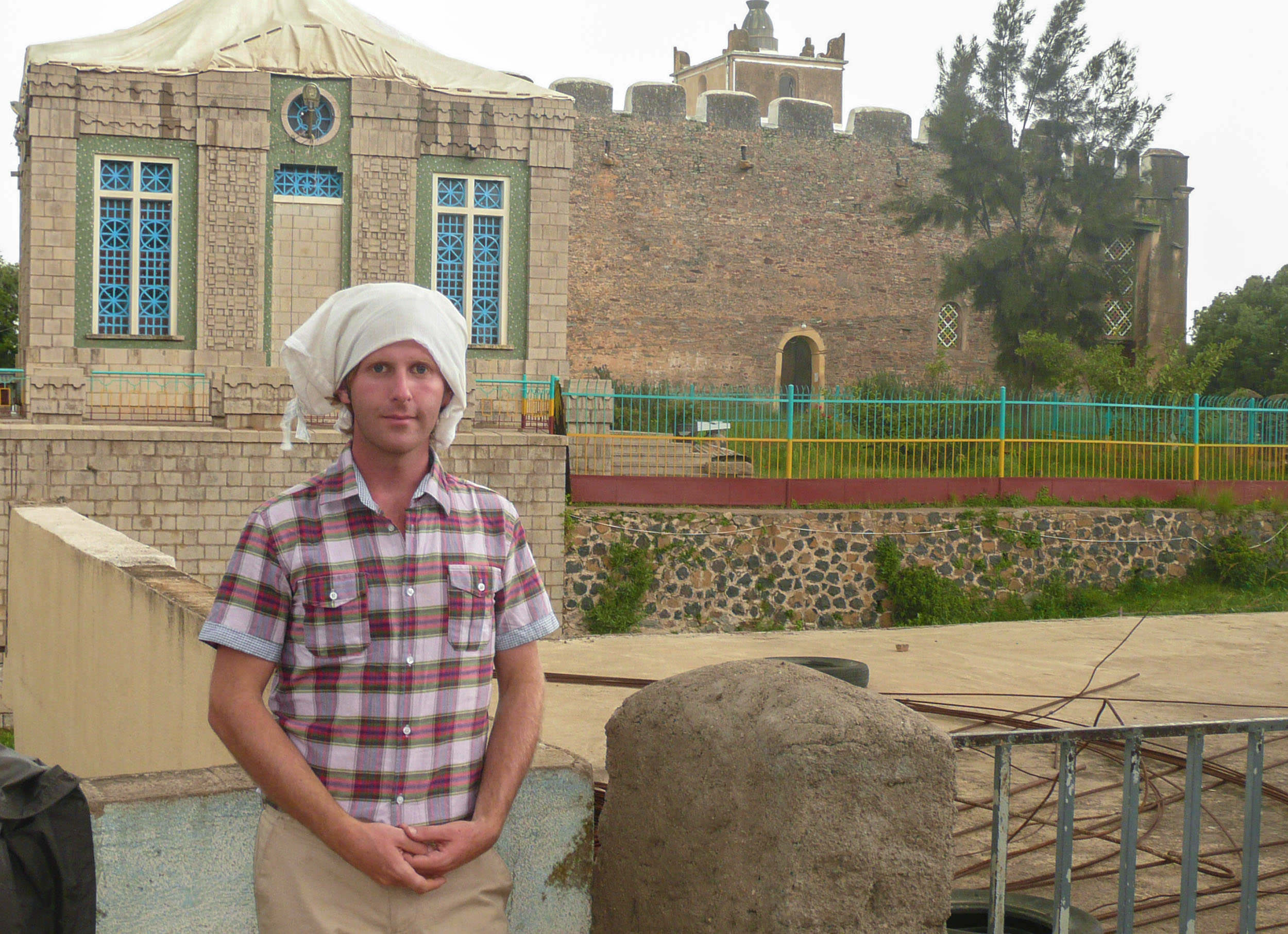
King Bazen’s Tomb
It’s not as beautiful as some of Ethiopia’s monasteries, but it is (perhaps) more fascinating, at least from a historical perspective.
You see, it’s alleged that King Bazen was known as Balthazar, a man who lived during the time of Jesus Christ’s life on Earth (and is possibly one of the three wise men).
The tomb is crude, not built with masonry but rather hewn into rock. Despite its beauty deficit, the mystery in which it’s shrouded makes the trek to the site a worthwhile expedition.
Debre Damo Monastery
Due to continuing ill health (as a result of having had typhoid), I had neither the energy nor the disposition to visit the sixth century monastery. I wish things had been different.
Built at the top of a flat-topped mountain, getting to the monastery requires a 15-metre climb up sheer cliff face utilising only a rope (and your body strength). It’s not for the feint hearted ... but safely reaching the top would be a satisfying feeling.
It houses some exceptional manuscripts that date to the sixth century and it's one of the country’s oldest religious buildings.
I’m sorry ladies, but it’s secret men’s business at Debre – no women are allowed.
Staying in Aksum - RECOMMENDED LENGTH OF STAY
Staying in Aksum - ACCOMMODATION
Eating in Aksum - RESTAURANTS
Getting Around Aksum - TRANSPORTATION
Getting to Aksum - TRANSPORTATION
TIGRAY
Tigray is the church to Gondar’s castle. It’s all about ancient monasteries in hard to reach locations.
It’s also a place I failed to see thanks to poor health. I have every intention of returning, one day, when I’m again in Africa.
I would highly recommend considering it as a stop on your north Ethiopia escapades. The rock hewn monasteries and churches, akin to Lalibela (below), are apparently impressive as a result of their inaccessible positions towards the top of mountains, carved into cliff faces.
You could easily spend two days here, making this itinerary (including the stops below) a complete three-week trip.
LALIBELA
Visiting Ethiopia's magical Lalibela is living and breathing history. Its soul is hewn in stone, alive with Christianity and lathered in layers of historical intrigue.
There is no ample preparation for the experience of seeing it in person: it’s breathtaking.
I’d read books and filled every fissure and fold of my brain with pictures of Lalibela’s rock hewn churches and beautiful panoramas. But stepping foot inside Lalibela was better than I could ever have imagined.
The most noteworthy sites, of course, are the rock hewn churches. However, don’t miss the opportunity to hike through the hills, particularly during the right season - the scenery and fresh air are invigorating (and kind of transcendent).
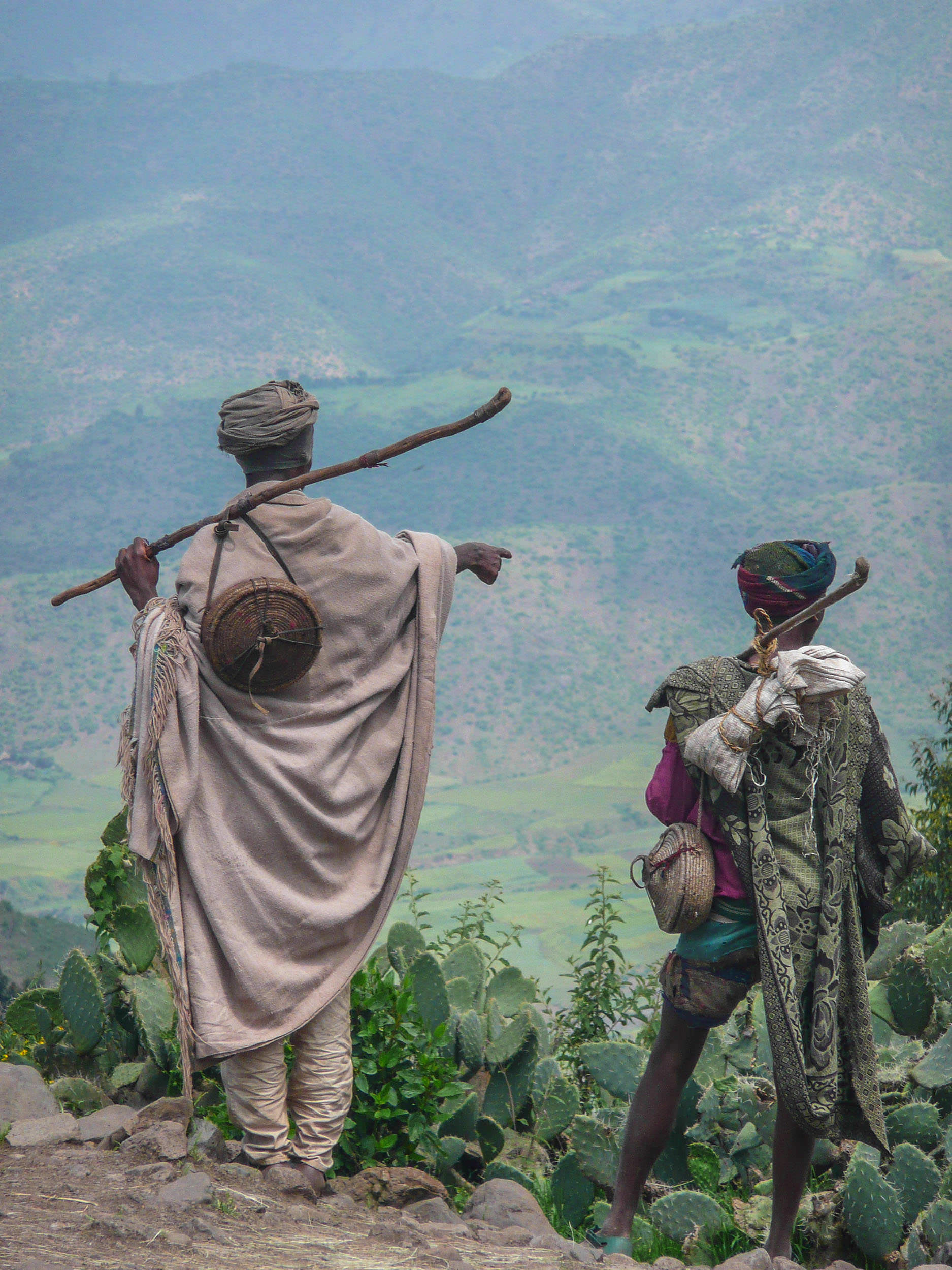
Rock Hewn Church – Biete Ghiorgis (St George)
The most impressive – and widely photographed – of the non-traditional churches is Biete Ghiorgis (or St George). Separated from the other 10 but connected by a series of trenches, it is considered by Ethiopian Orthodox to be a component of Jerusalem (either heavenly or earthly, I’m not entirely certain).
The other 10 are divided (five on either side) by a trench considered to represent the Jordan River, and the churches an element of Jerusalem.
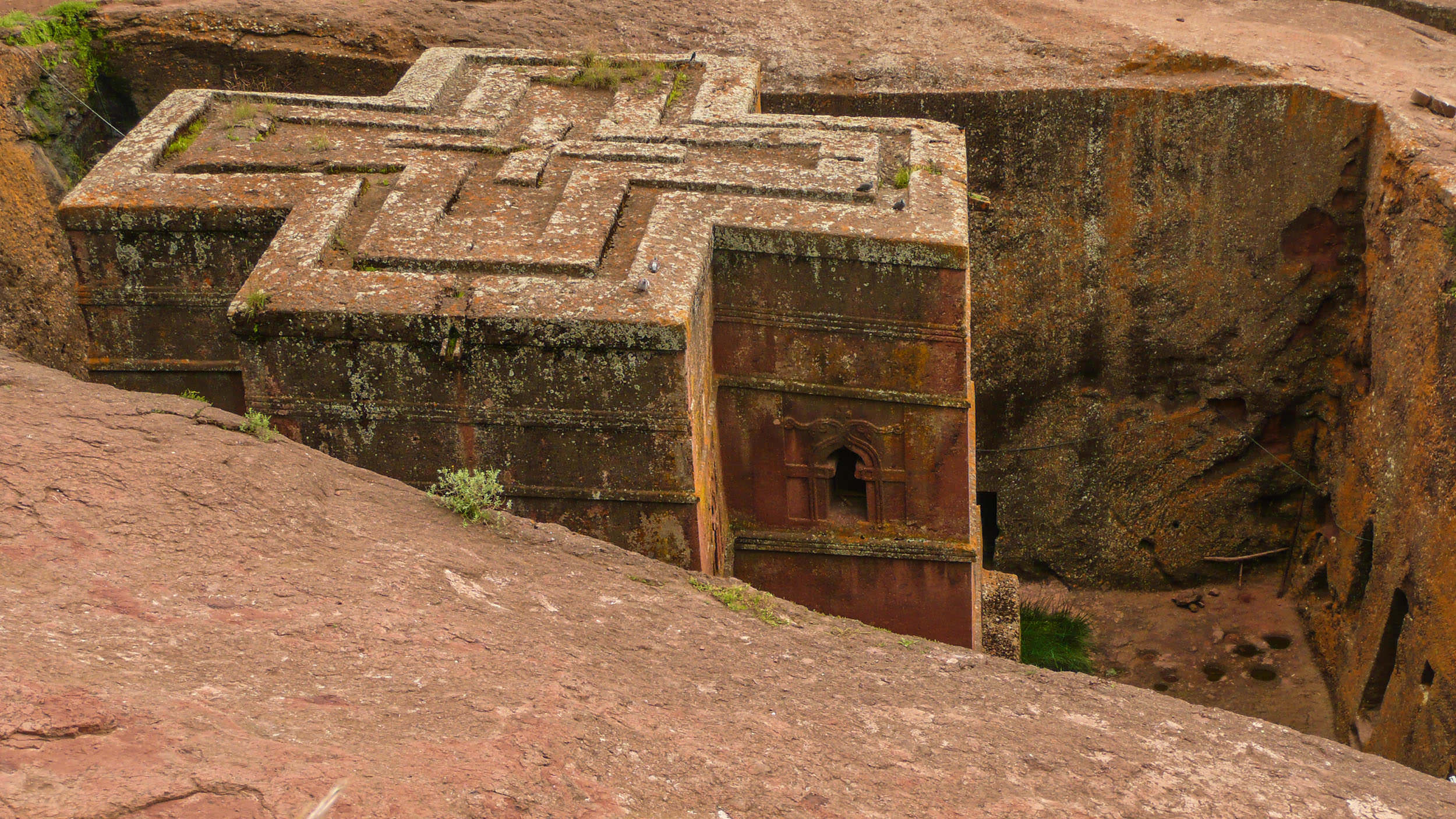

It all dates to the 12th century, to a King desirous of recreating the equivalent of the biblical holiest of holies.
Ideologies aside, the fact Biete Ghiorgis - and the other 10 - were hewn from solid rock during a time in which construction technology was limited, makes their existence inspiring. I struggled to comprehend the enormity of the work undertaken.
Its existence is a testament to the ingenuity and ecclesiastical aspirations of devotees, particularly those of the past.
Rock Hewn Church – Biete Amanuel (House of Emmanuel)
Located on the southern side of ‘The Jordan’ (a trench) is Biete Amanuel. Perhaps the most beautiful of the finely carved churches, it's a free-standing example of Aksumite buildings.
My guide for the afternoon indicated it may have been used as a royal chapel for the noblesse of the reigning Kingdom. Reaching a height of 11 metres, the monolithic structure radiates an impression of grandeur.
Preserved in its natural setting, it’s been declared a UNESCO World Heritage Site along with its 10 counterparts.
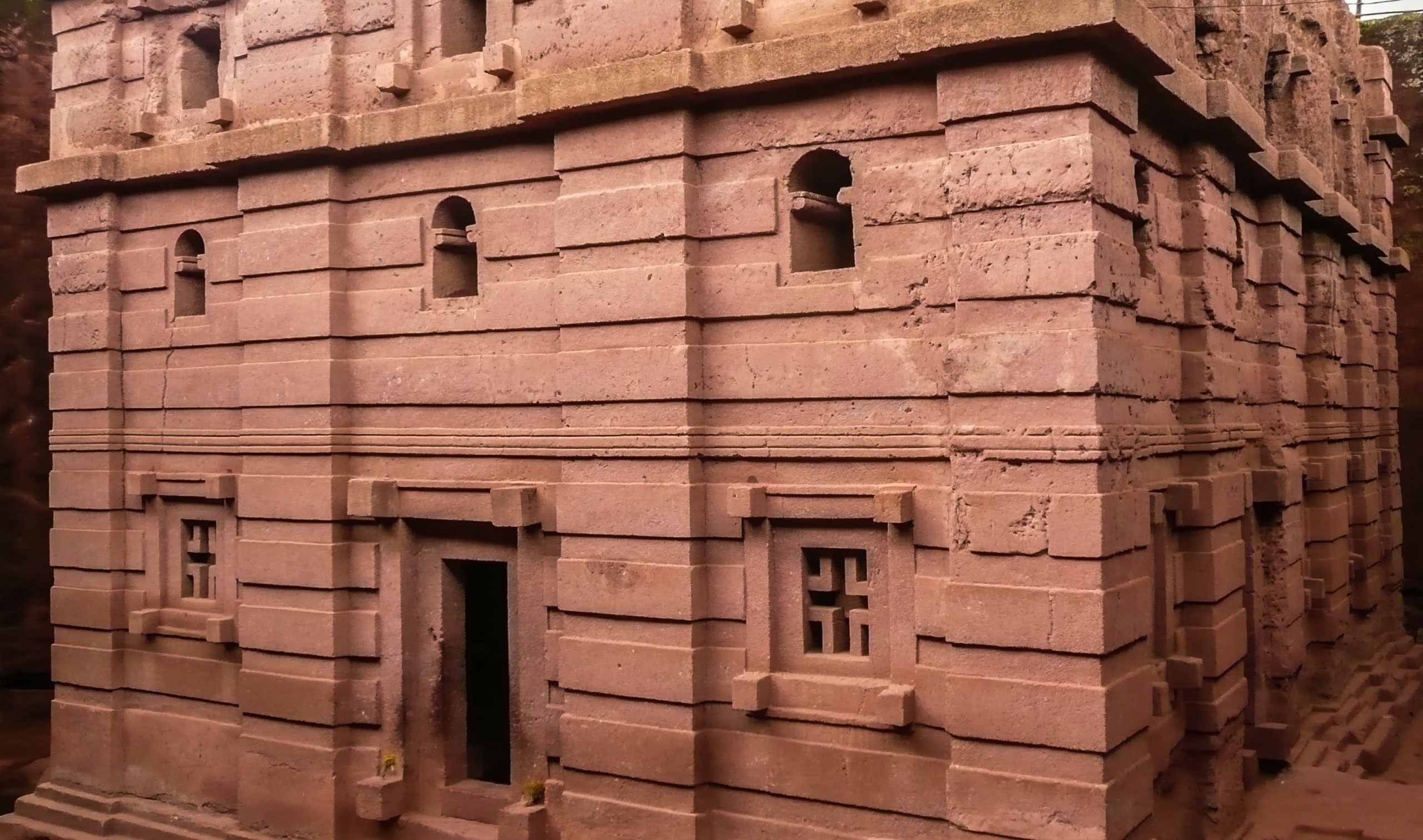
Rock Hewn Churches – the other Nine
I didn’t visit all of the churches. However, if you wish to see them, then knowing their names may help in your research.
Those to the ‘north of the Jordan’ include:
- Biete Medhani Alem (House of the Saviour of the World)
- Biete Mariam (House of Mary)
- Biete Maskal (House of the Cross)
- Biete Denagel (House of Virgins)
- Biete Golgotha Mikael (House of Golgotha Mikael)
Churches to the ‘south of the Jordan’ include:
- Biete Amanuel (House of Emmanuel, outlined above)
- Biete Qeddus Mercoreus (House of St Mercoreos)
- Biete Abba Libanos (House of Abbot Libanos)
- Biete Gabriel Raphael (House of Gabriel Raphael)
- Biete Lehem (House of Holy Bread)
And, as aforementioned, Biete Ghiorgis (House of St George) is isolated - but only by a short walk - from the others.
Hike into the Hills
Few things beat a walk through spectacular country scenery, stopping to greet agrarians en route to the summit of a nearby mountain.
I took the advice of staff at Asheton Hotel, who also kindly found me a guide, and vanished into the hills surrounding Lalibela for the better part of a day. Drenched in sunshine and filled to the brim with fresh air, I felt the illness from which I’d been suffering start to transpire. Fresh mountain flowers scented the wind as it caressed my cheeks, the aroma covering the stench of the animal paddies around which we walked.
The panorama a few hours out of Lalibela, particularly from Asheton Maryam Monastery, took away my breath and left me intoxicated by Ethiopia’s natural beauty.
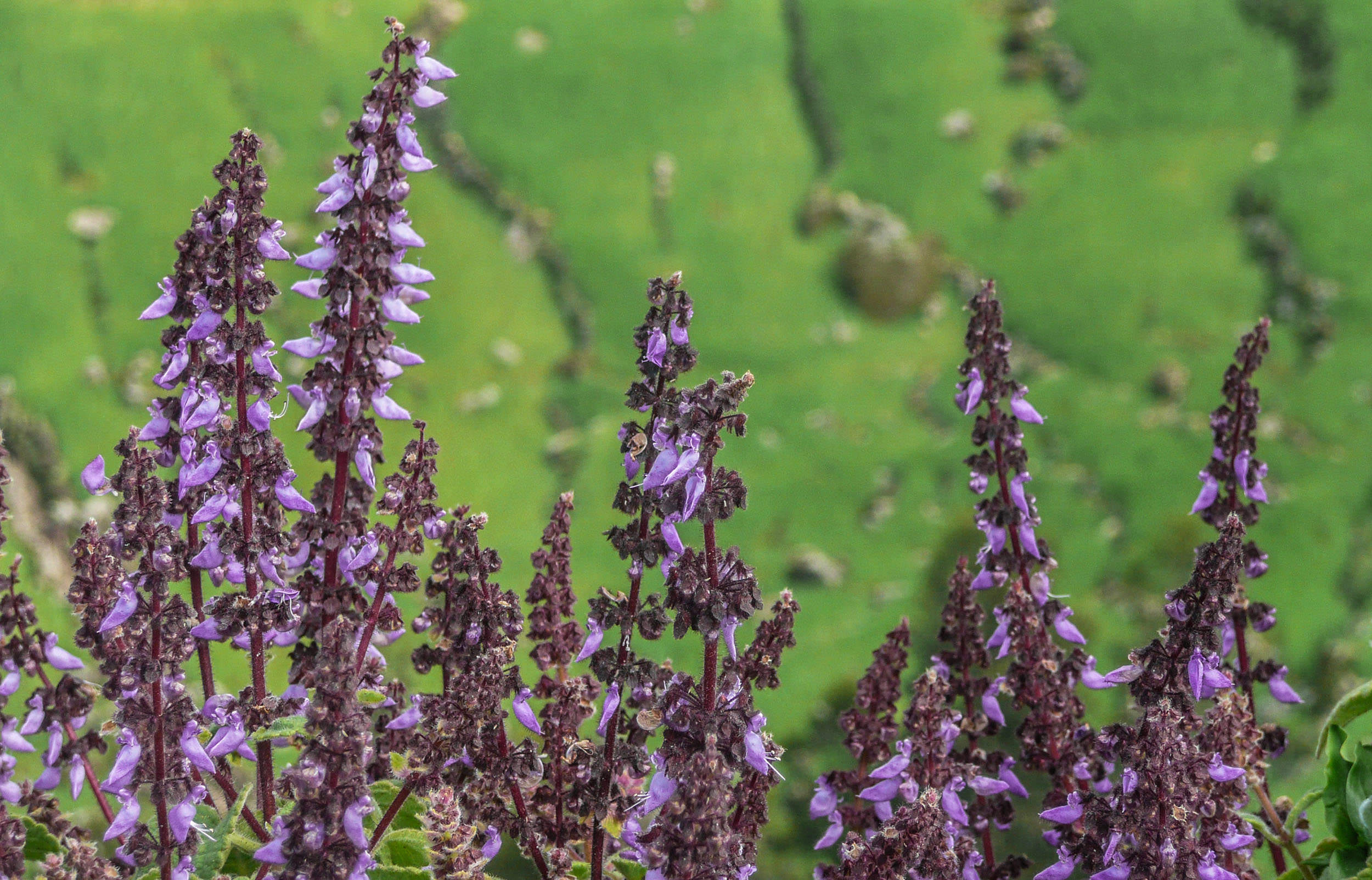
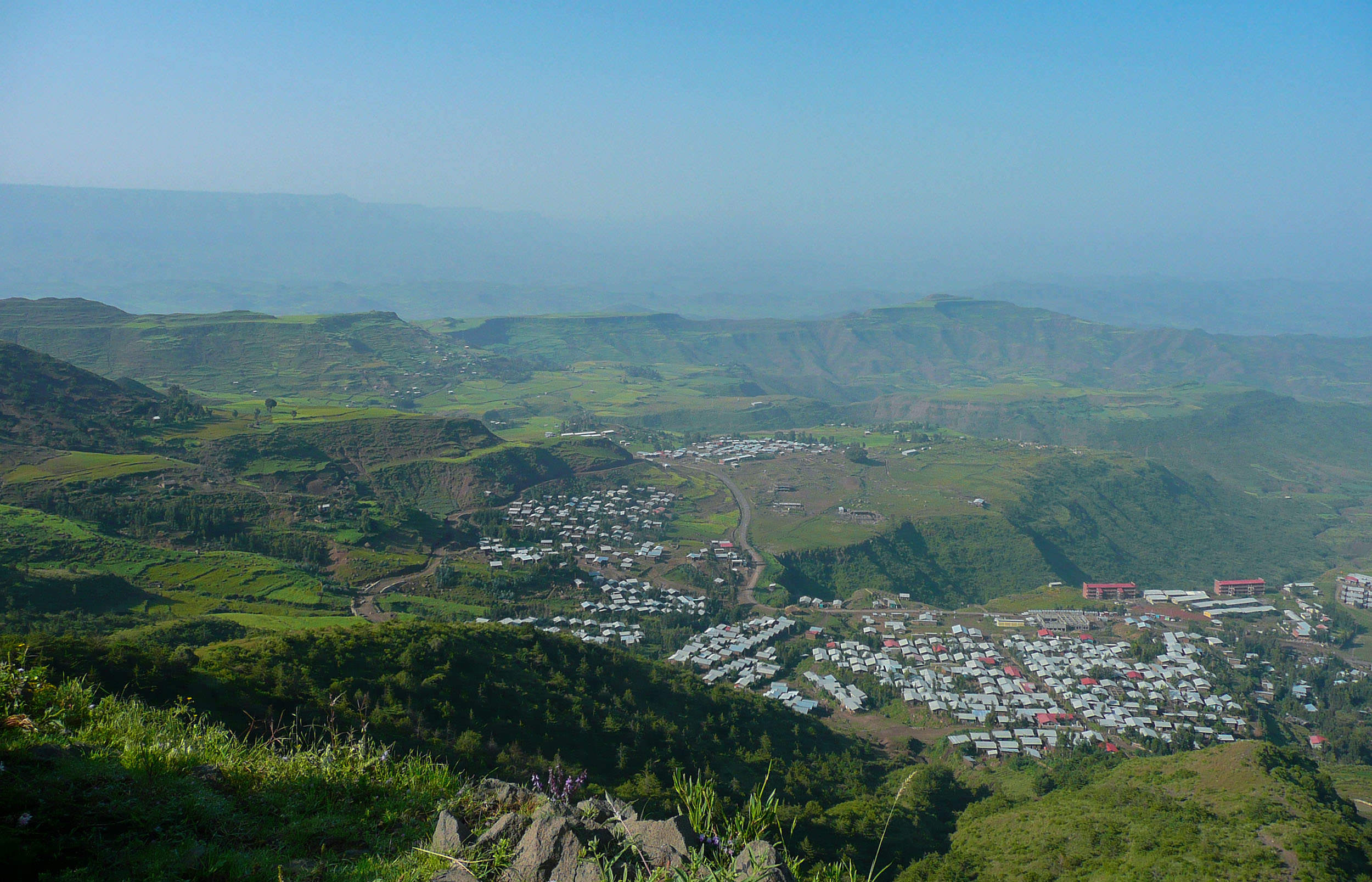
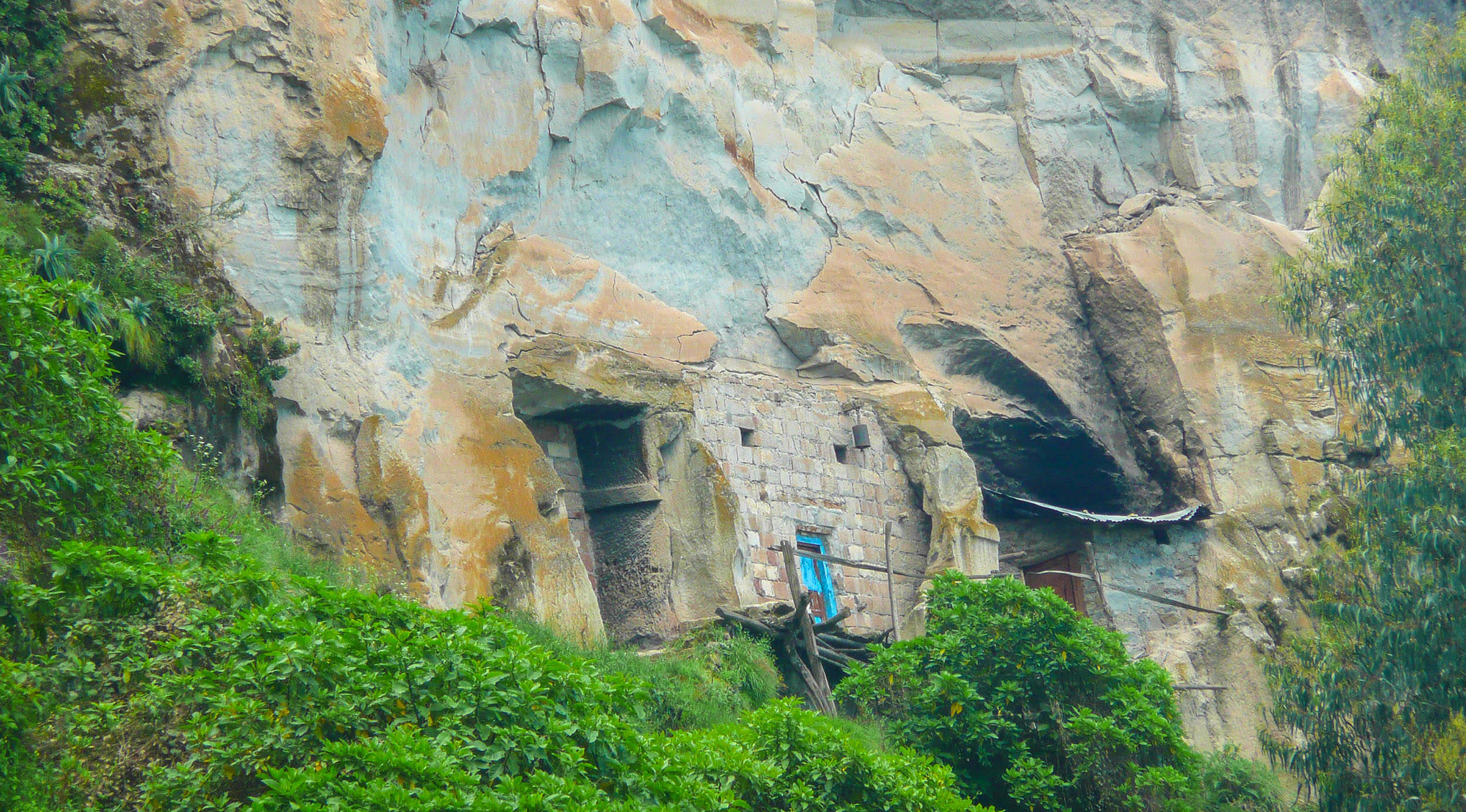
There are local companies that can arrange guides, particularly if you want to embark on multi-day treks. I simply asked at Asheton Hotel, and they kindly arranged a local youth to guide me.
On my own, I likely wouldn’t have made it to the magnificent lookout he found, or the monastery. But you could probably go on your own, though it’s always advisable to take either a functioning phone with a reliable signal (and charged battery) or another traveller.
Trekking alone can be perilous, especially in a country in which you don’t speak the language, particularly one with limited reliable medical support.
Blue Lal Hotel for Injera
At Blue Lal Hotel, the hearty soul of Ethiopia came alive as I bit into the spongy, unleavened goodness of injera, topped with rich bean curry — an otherworldly experience, especially after the food I'd been eating.
Lalibela is a little more tourist focussed than other major destinations in the north of the country, which can be both advantageous and disadvantageous. In terms of food quality, it was great: the fodder was always farangi-friendly, and tasty to boot.
At the Blue Lal Hotel, there are straw mats on which to sit while scooping the bold bean flavours with slivers of injera. They also offer cooking classes.
Staying in Lalibela - RECOMMENDED LENGTH OF STAY
Sleeping in Lalibela - ACCOMMODATION
Eating in Lalibela - RESTAURANTS
Getting Around Lalibela - TRANSPORTATION
Getting to Lalibela - TRANSPORTATION
DESSIE
Driving into Dessie initially appeals to intrepid souls with a thirst for authenticity and trailblazing: perched on rolling hills, littered with rusty roofs and sans a Caucasian presence, it’s enticing. Who knows what treasures may be awaiting discovery?
Don’t be fooled. Dessie is possibly nothing more than a rural town with dusty streets and an insipid core.
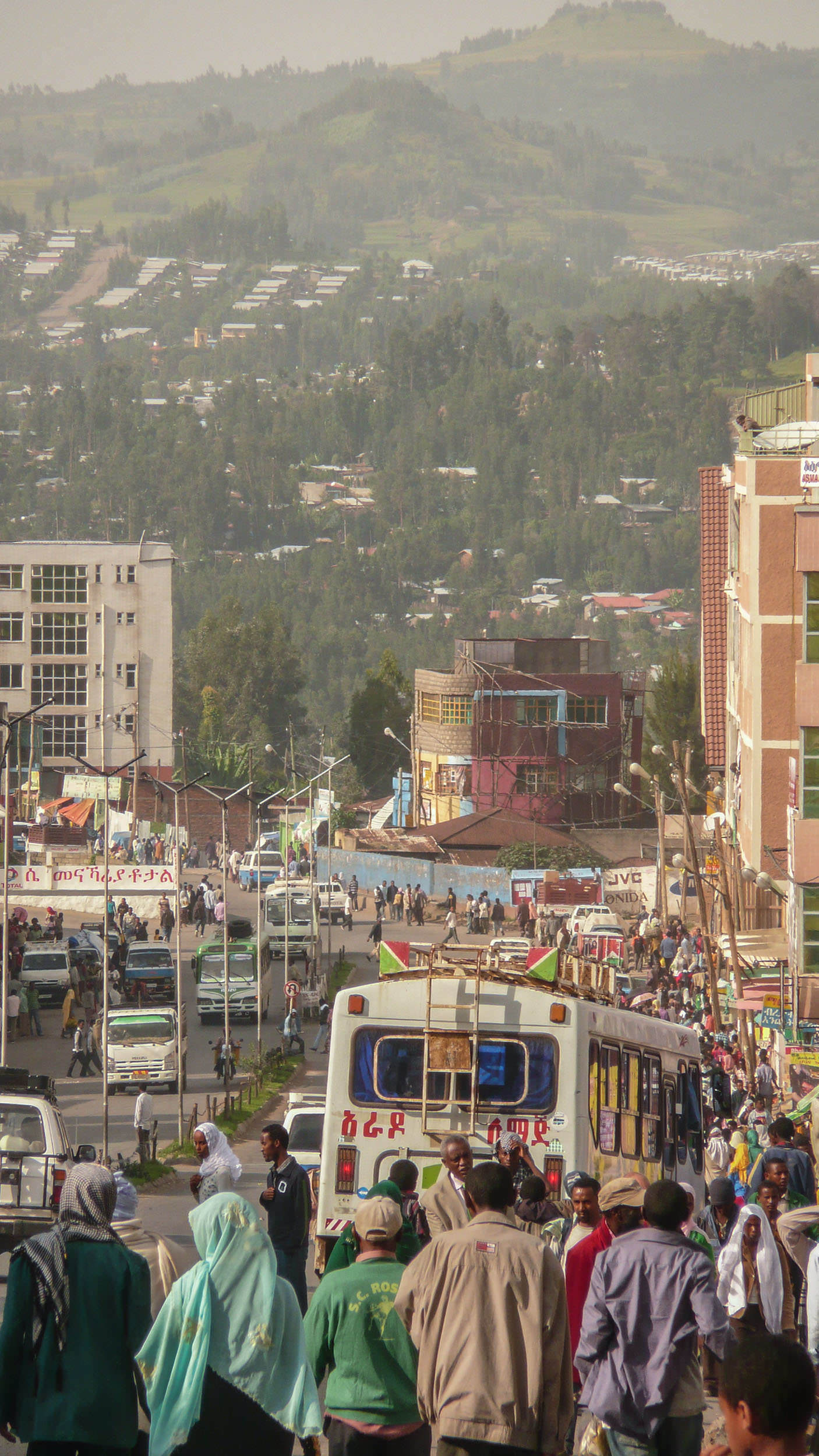
But it is a common stop between Addis Ababa and Lalibela.
I wandered the streets and attempted conversing with local people, none of whom reciprocated my interest. In fact, I received glares of disdain. I got a touch of frost, and left after a day, returning to Addis Ababa for journeys elsewhere.
As such, I don’t have any recommendations regarding activities for Dessie.
ITINERARY FOR VISITING ETHIOPIA - CONCLUSION
There you have the (mostly) overground journey I undertook as a solo backpacker in Ethiopia, on a Cairo-to-Cape Town itinerary.
Every time I think about the journey - the good, the bad and the ugly - a sense of nostalgia takes over. I dream of the faces and the places, the contrasts and contradictions, and the magic and meaning.
Ethiopia is a place like no other. It’s where I gained a sense of the trailblazing the nomads of the 60s undertook, taking the road less travelled, pushing boundaries physically and personally, and seeing the world afresh, through new eyes.
Although I’m not the first person to have ever travelled to Ethiopia, nor the last, I was gifted the opportunity to be witness to a country and people relatively untouched by the merciless intemperance of tourism.
It’s real. It’s unattenuated. It’s as authentic as you can get.
ITINERARY FOR VISITING ETHIOPIA - NOTE
There are inclusions and exclusions you can negotiate to personalise the itinerary, depending on personal preferences. It can be done within the timeframes suggested, slowed down or even accelerated a little.
Getting to the south of Ethiopia as well as the north in three weeks would be a stretch, but not impossible. Ideally, for a full Ethiopia itinerary, four weeks (or more) would be ideal.
Please feel free to contact me regarding anything you’ve read in this article, and comment below.
